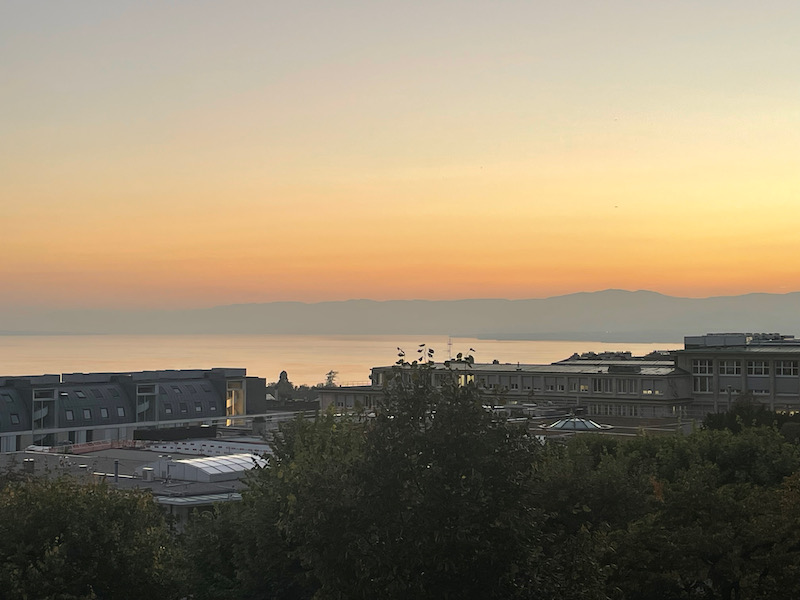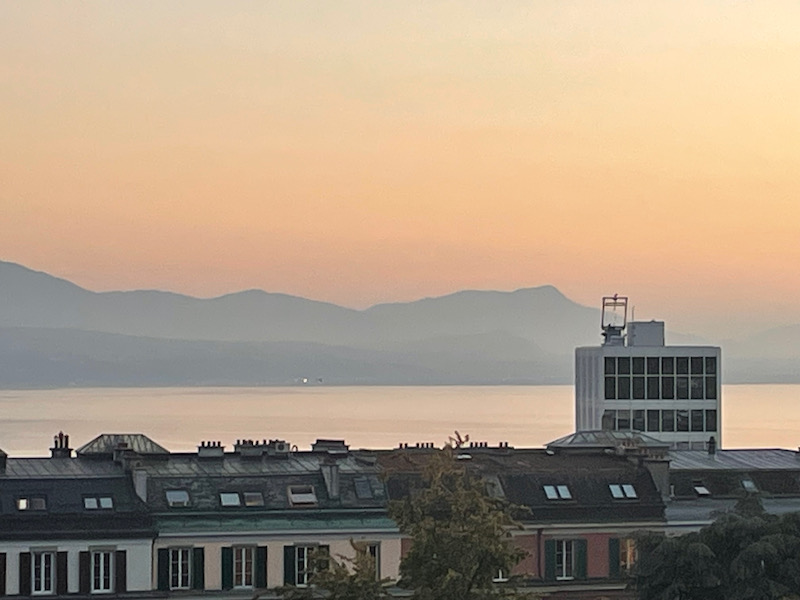Our Blog - Germany 2023 - Lausanne, Switzerland
On our way to Southern Germany, we stopped in Lausanne for a couple nights, adding another country to Lucy's list (France, Spain, Italy, Andorra, and now Switzerland). We didn't realize that it was going to be as hilly as it was. It sits on the shores of Lake Geneva with the French town of Évian-les-Bains facing it on the other side of the lake. It is the 4th largest city in Switzerland with a population of 140,000 in the city and over 400,000 in the "agglomeration". Initially a Celtic and Roman settlement on the shores of the lake, Lausanne became a town at the foot of Notre Dame, a cathedral built in the 12th century. A bit of trivia: the city has a 28-station metro system, making it the smallest city in the world to have a rapid transit system (which we rode down to the lake to see the Olympic museum park).
I will start with some general architecture ... it is (for me) an interesting mix of Italian and German architecture, maybe with a little bit of French thrown in.
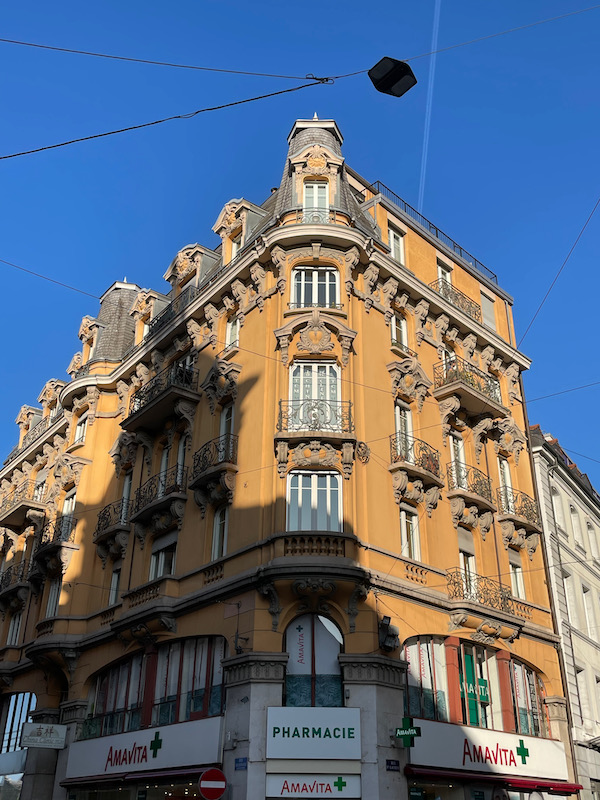
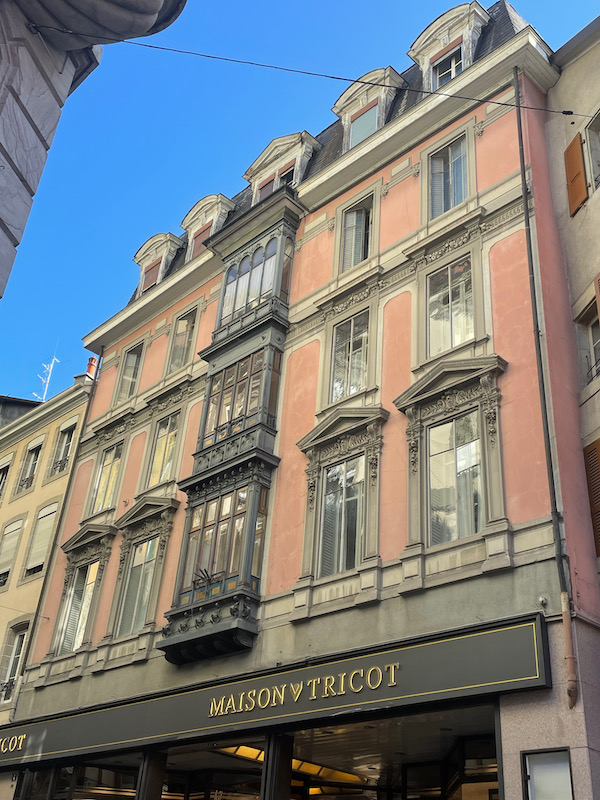
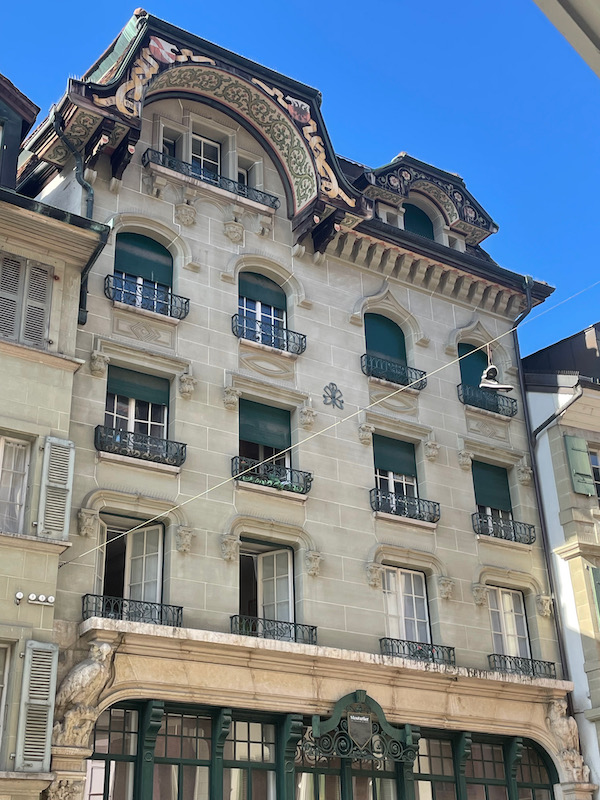
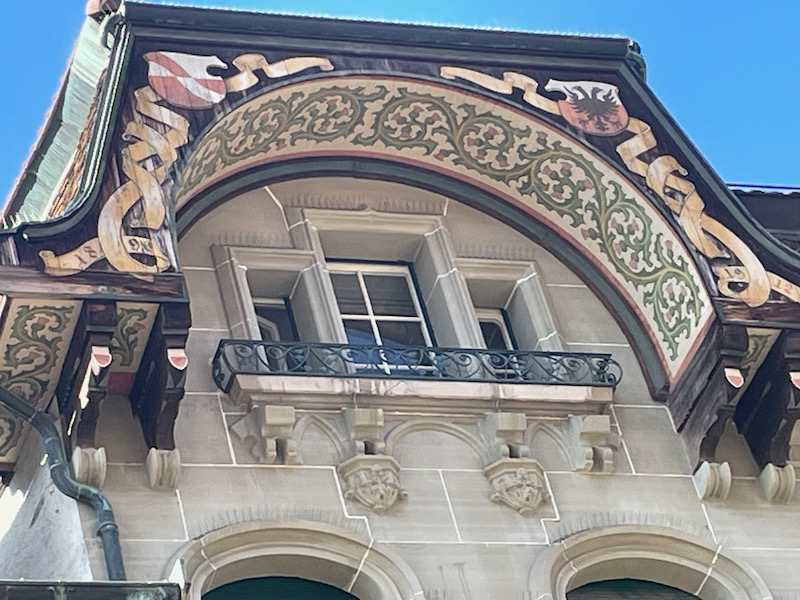
The Palais de Rumine was built in the late 19th-century in the Florentine Renaissance style. It was not actually built as a residence for anyone, but built specifically for use by the public. The money for the building was left to the city of Lausanne by Gabriel de Rumine, son of Russian nobility (his father was Prince Basile de Rumine). He died very young, only 30 years old, of typhoid fever on his way to Constantinople. On 24 July 1923, the Treaty of Lausanne was signed in Palais de Rumine. Today, it houses several museums.
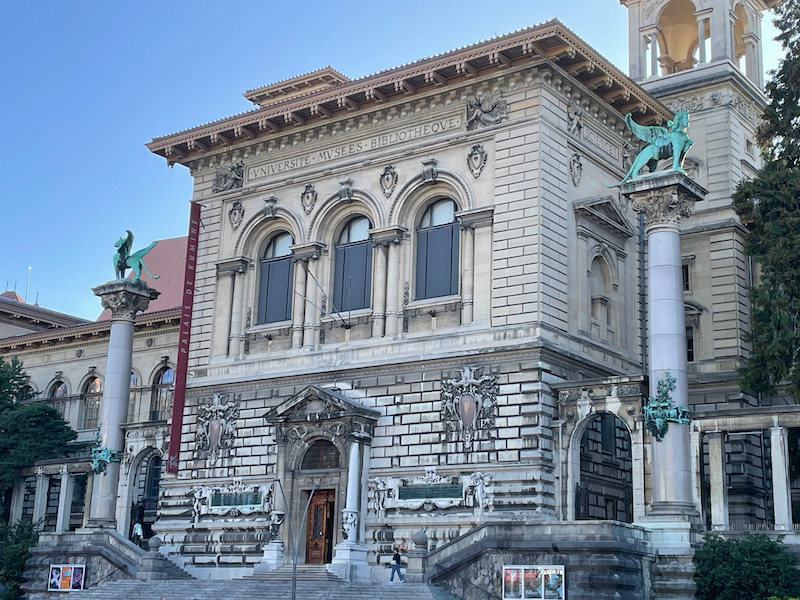
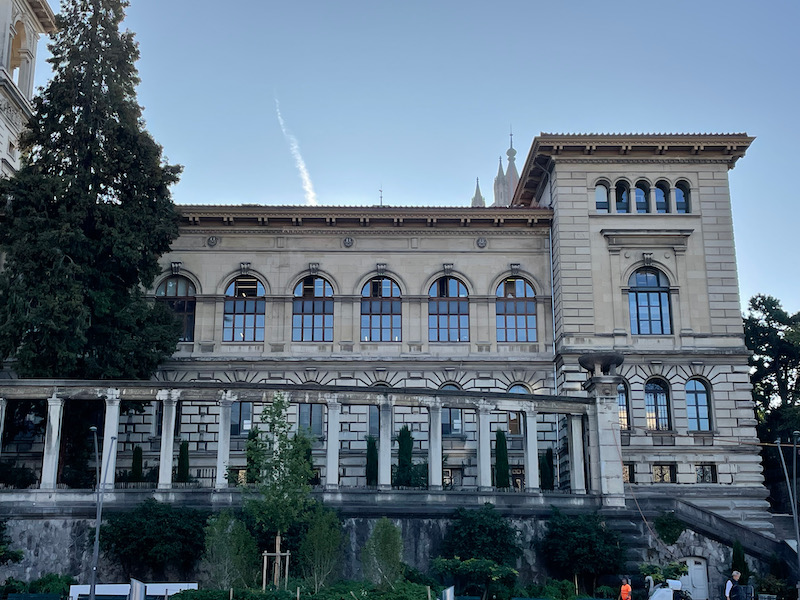
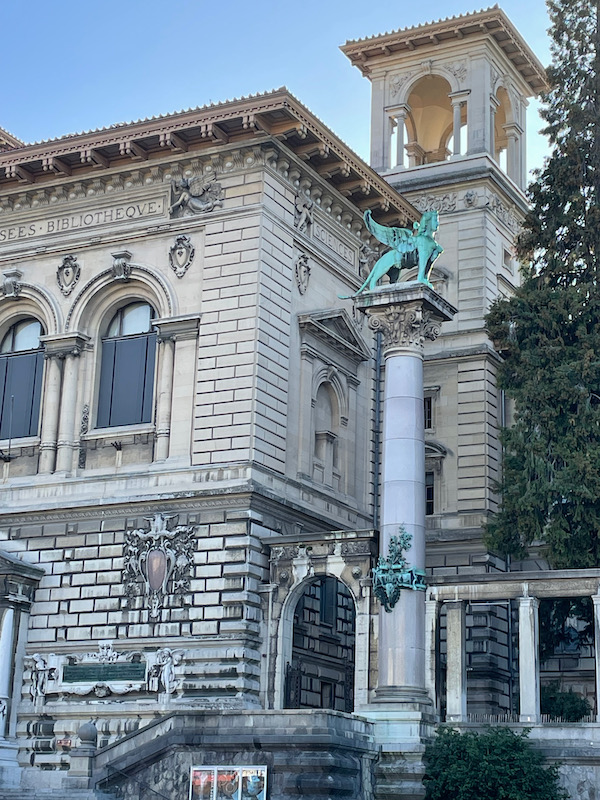
The Castle of Saint-Maire was built between 1397 and 1425 by the Bishops of Lausanne as their fortified residence. It remained the bishop's residence until 1536, when it was turned into an armory for a couple hundred years before becoming the seat on the local government. The château was built as a single massive rectangular block, which was very common at the time, with brick for the upper portion and sandstone for the lower portion. The small building that looks like it was stuck on the side was built in 1789.
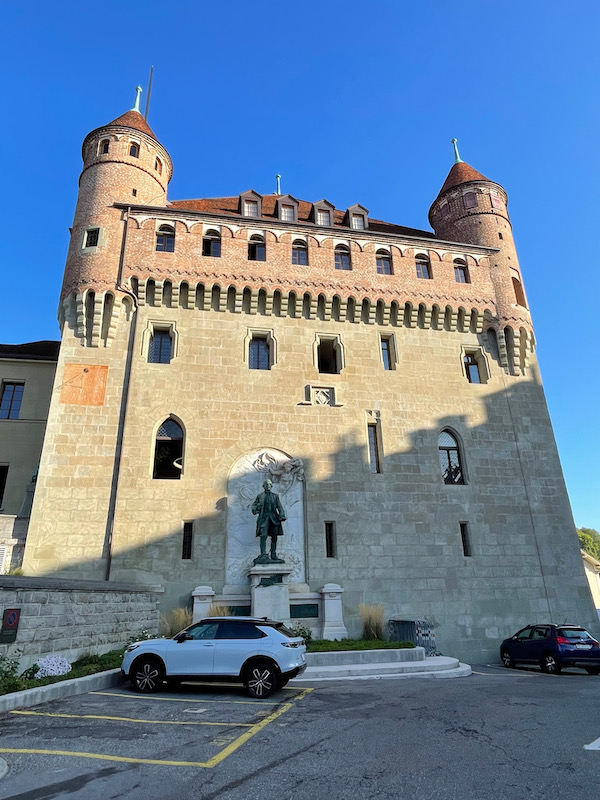
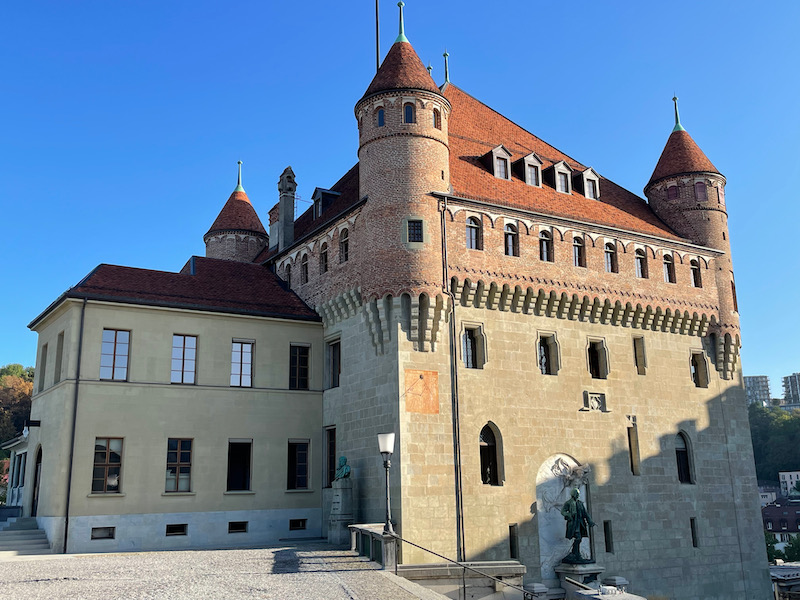
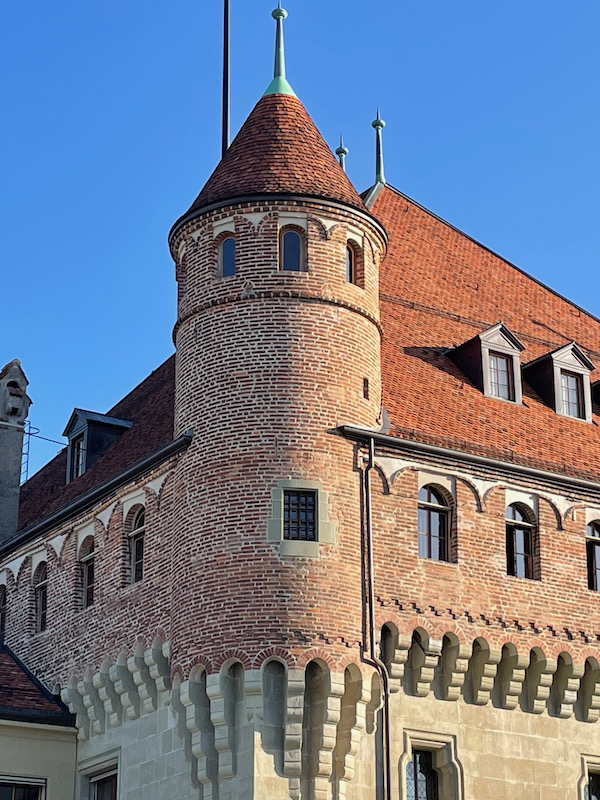
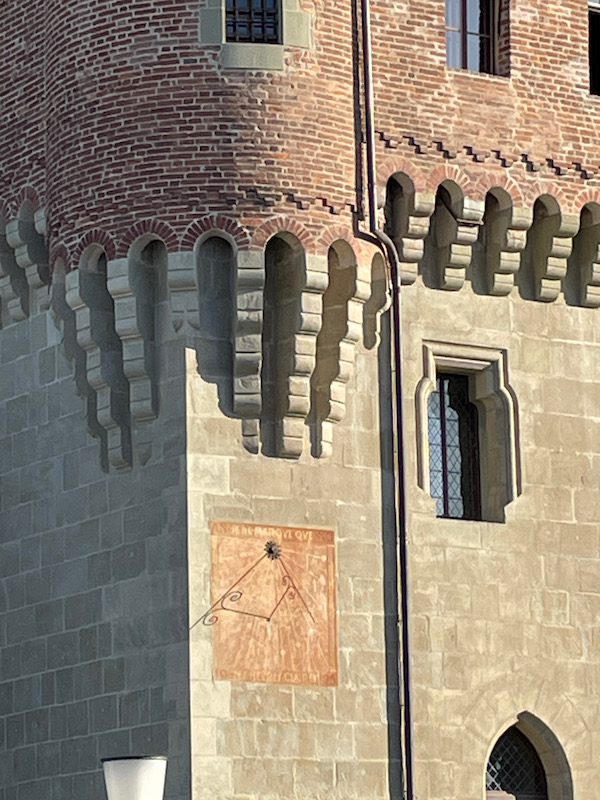
There is a statue of Abraham Davel on the front of the castle. He was a Swiss soldier who was sentenced to death and beheaded for basically calling for a mutiny ... looking to make the Canton of Vaud an independent district instead of being under the jurisdiction of the capitol of Bern. When he was arrested and interrogated, he claimed that it was suggested directly by God. However, they didn't buy that defense.
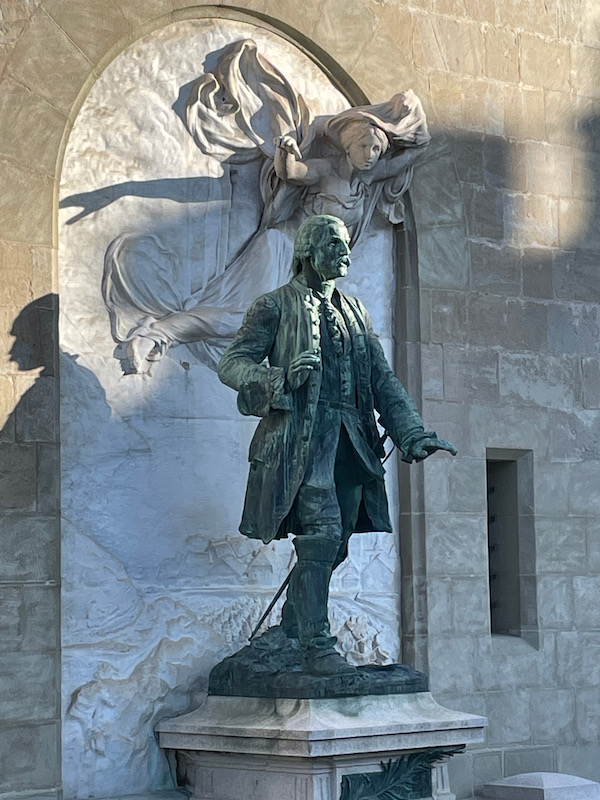
From this point up at the top, there is (most days) a nice view of the mountains and the lake, although this day, it was VERY hazy.
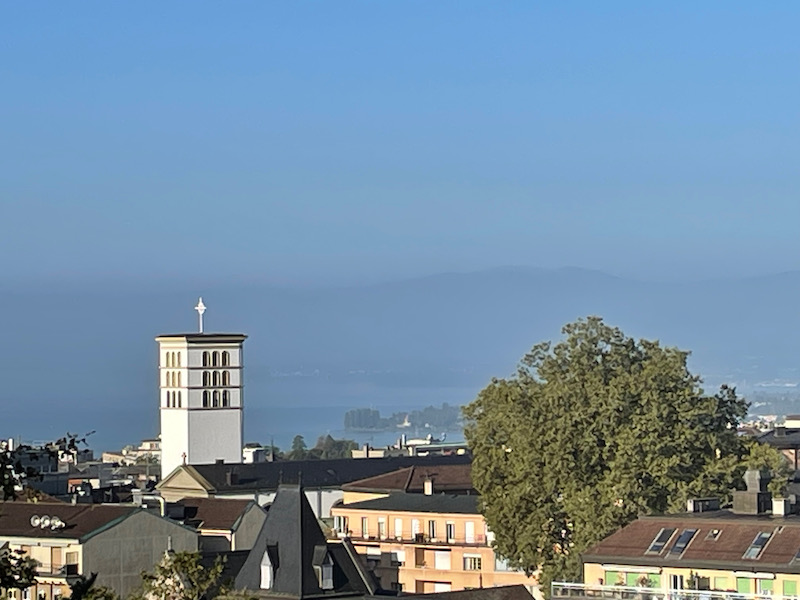
The Old Academy was the first school for protestant theology in French language, and the building dates back to 1587. It is still an educational building today.
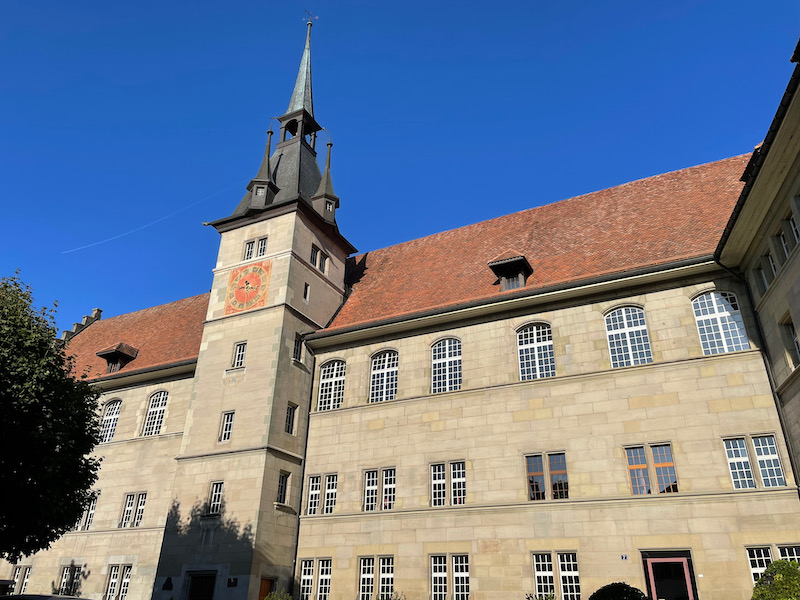
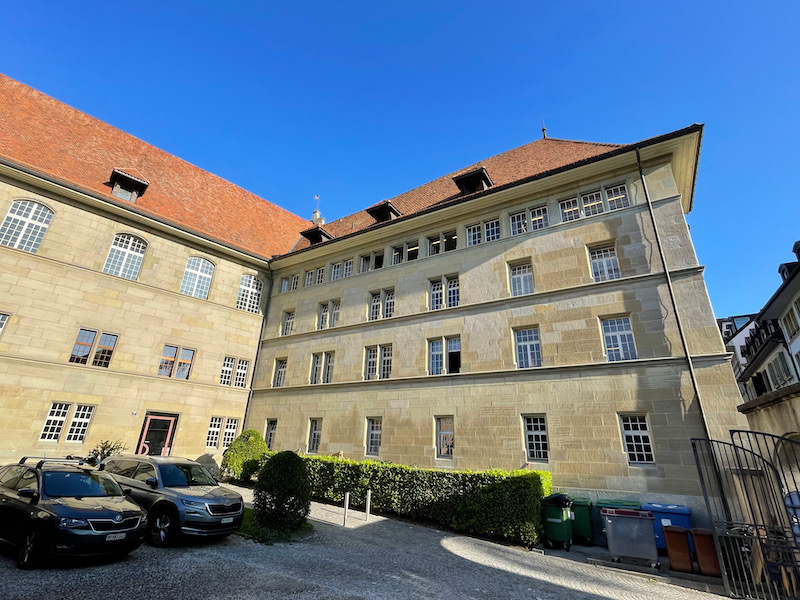
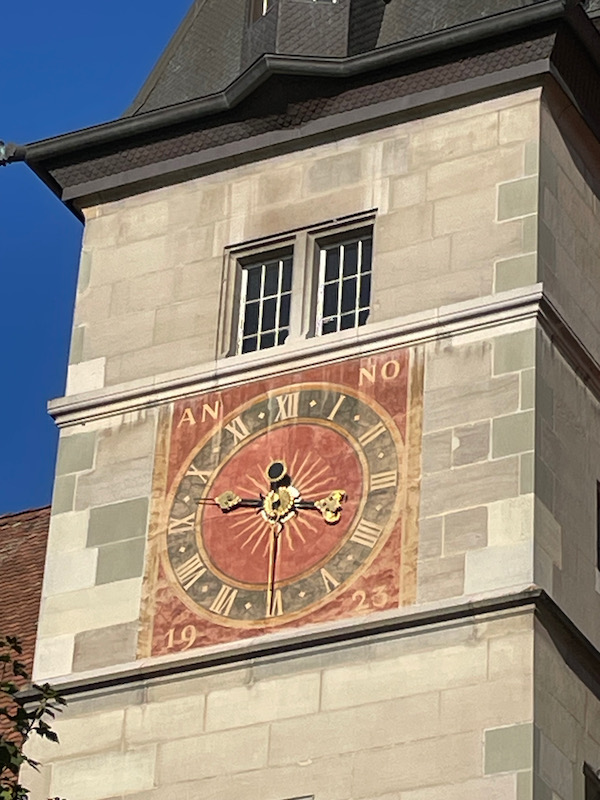
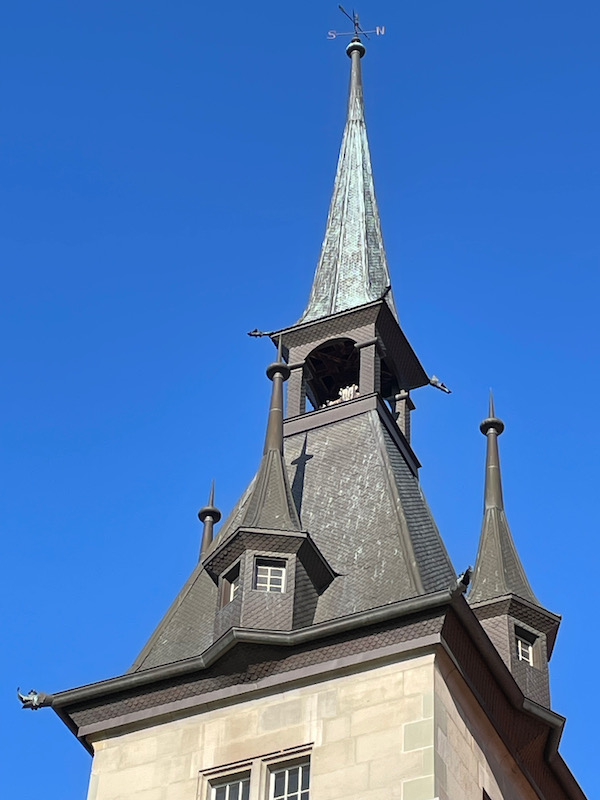
The Cathedral of Notre Dame of Lausanne was started in 1170 but wasn't finished until 1275 in a Gothic style. It is built of a soft sandstone and so it has undergone almost constant restoration work since it was completed.
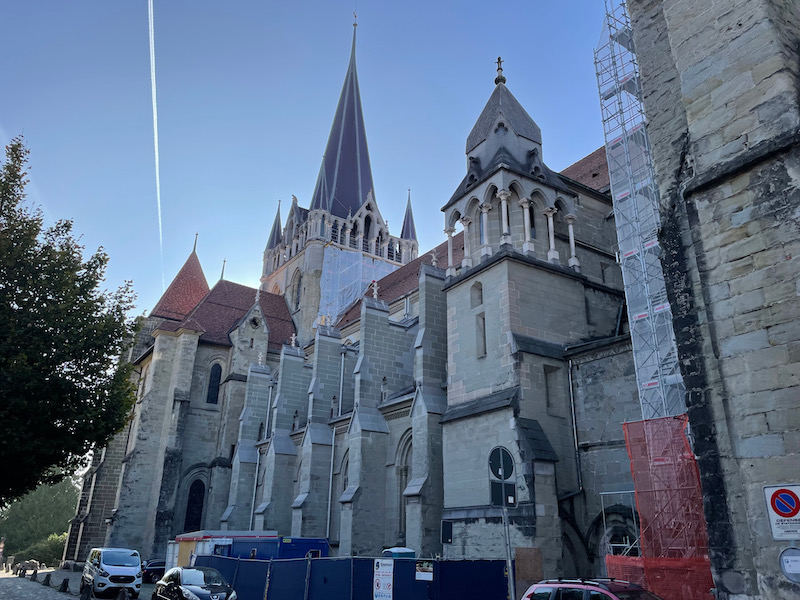
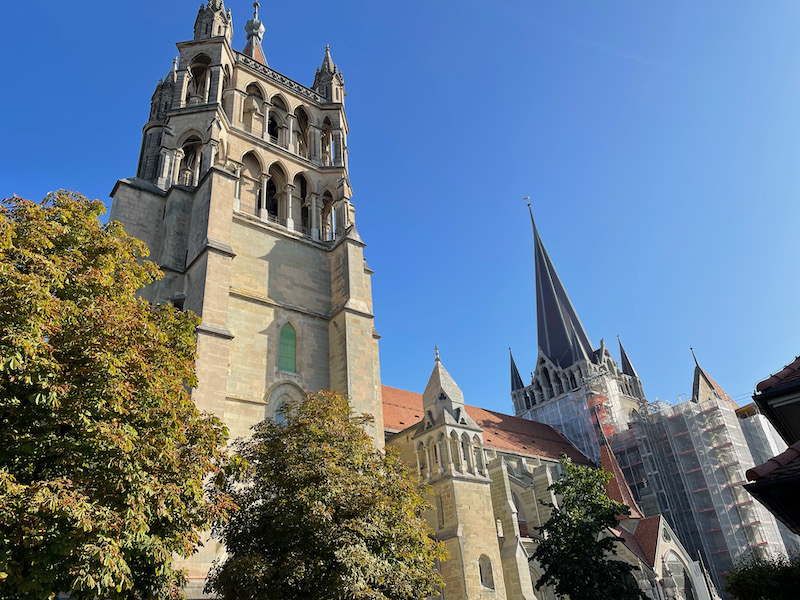
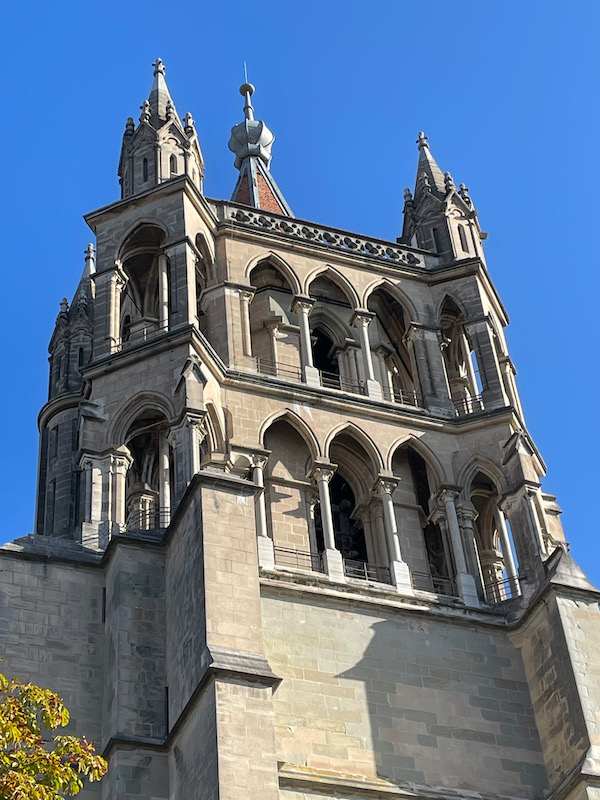
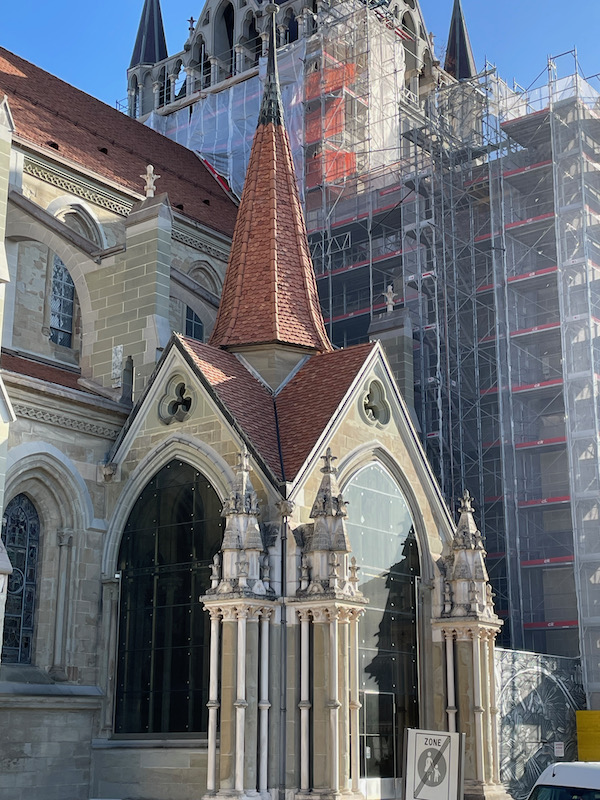
The entry doorway is quite impressive, and (most likely) recently restored, based on the color compared to the rest of the church.
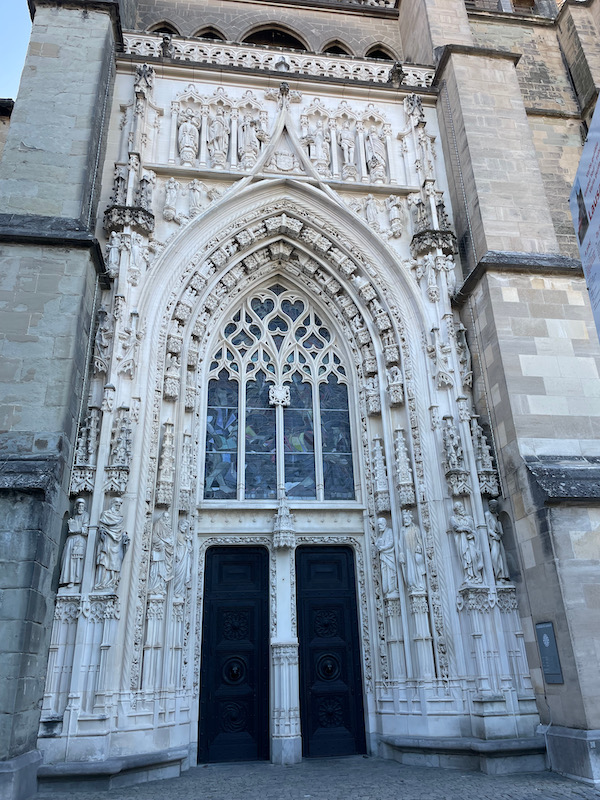
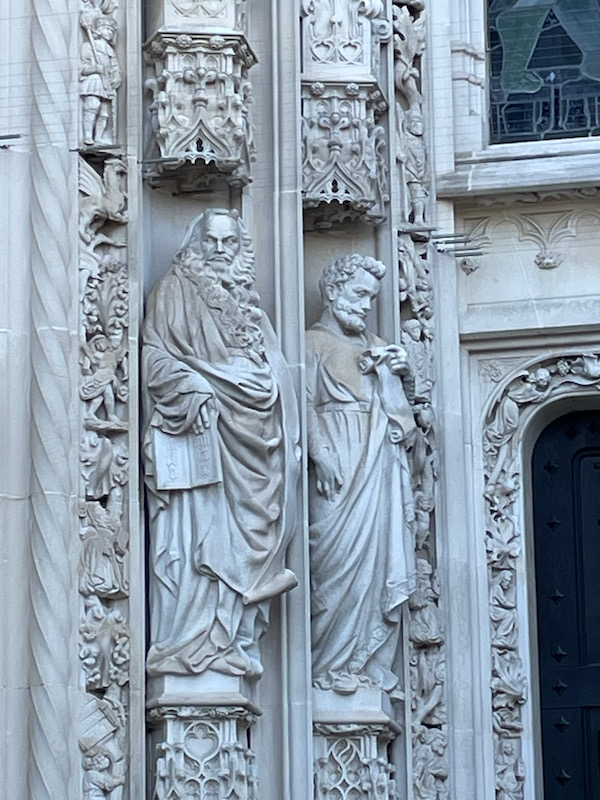
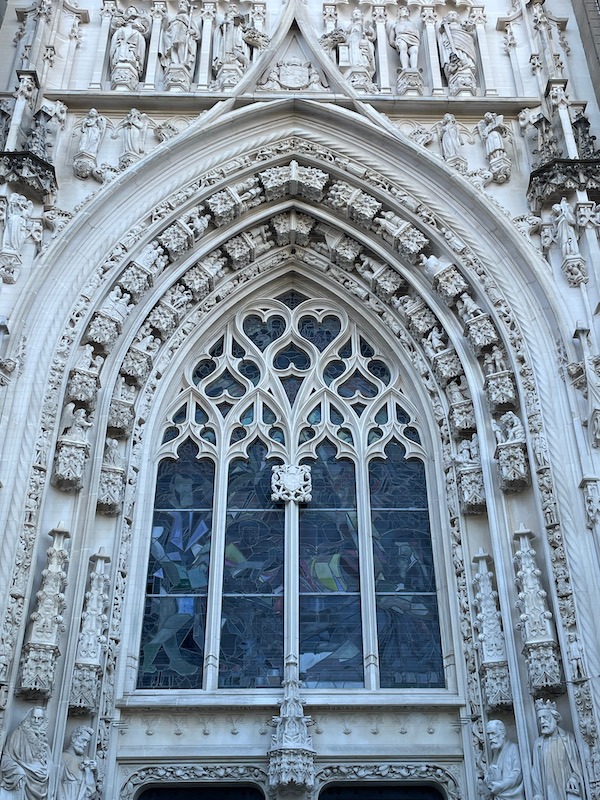
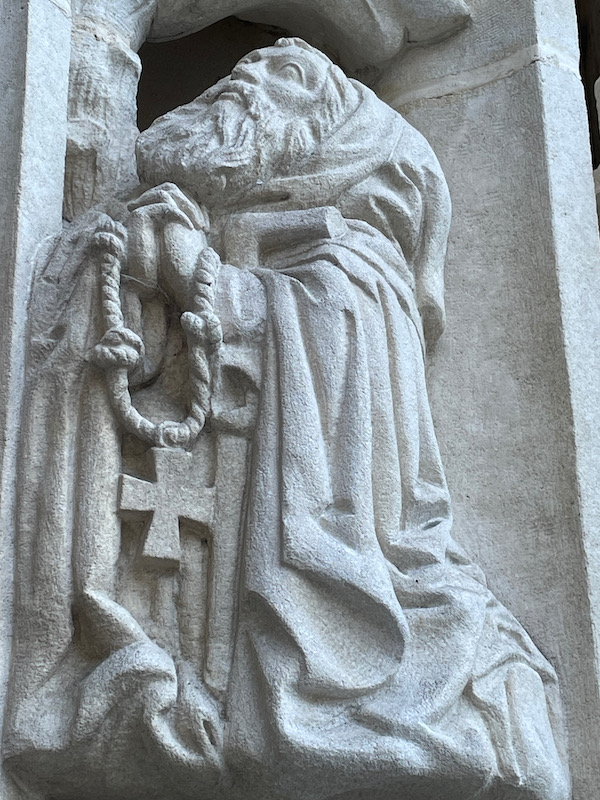
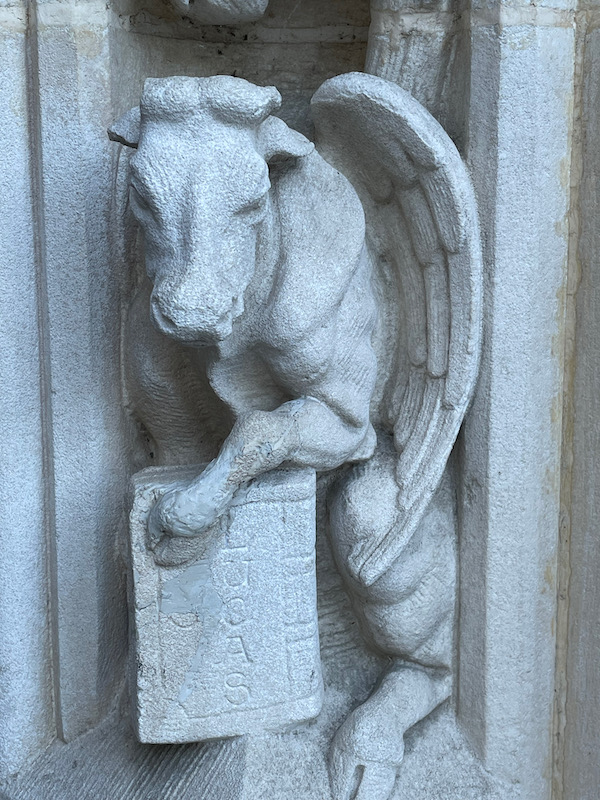
Inside, you can see the high, Gothic ribbed vaults and the side aisles on either side of the nave.
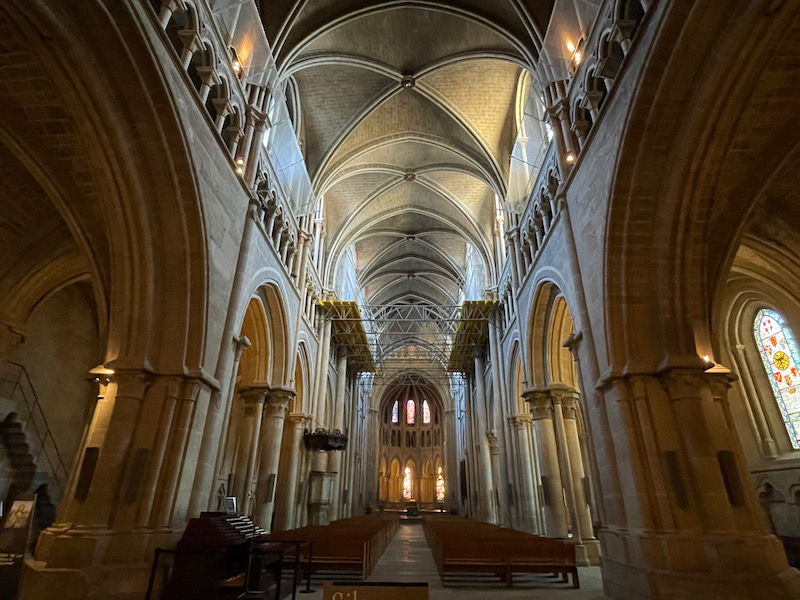
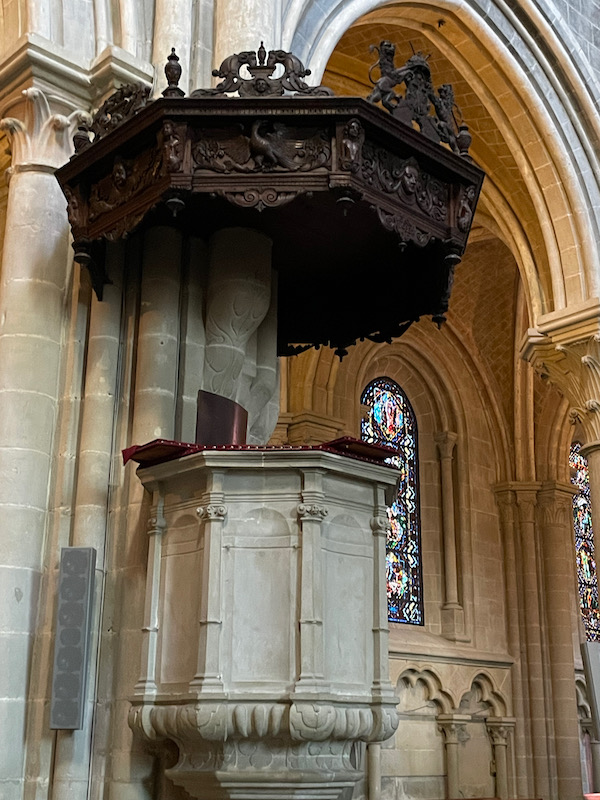
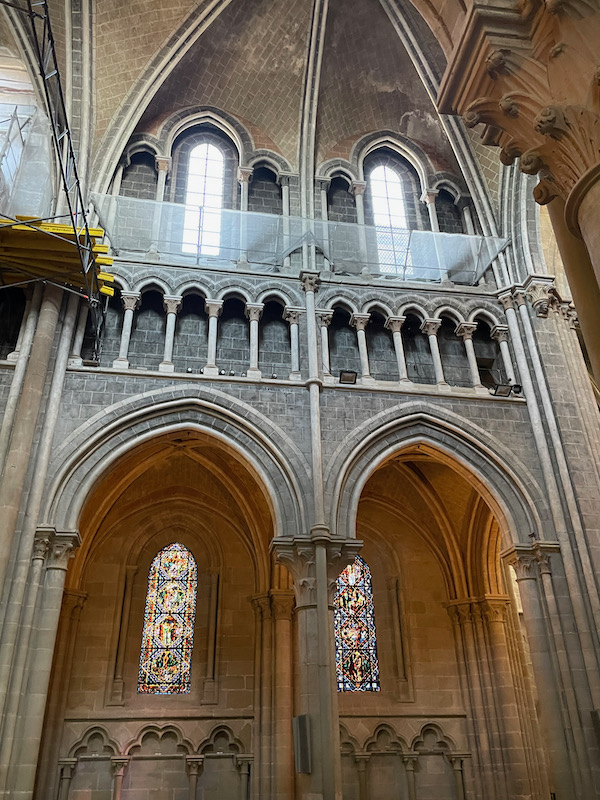
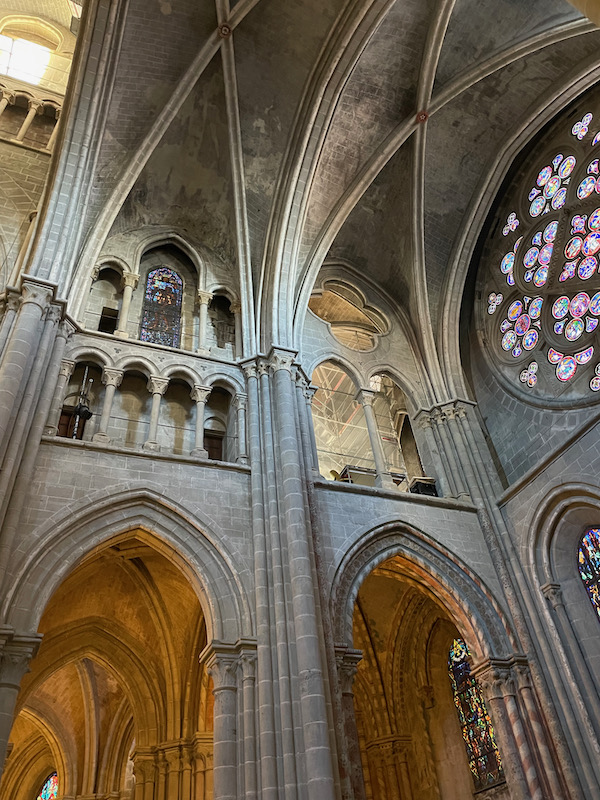
This is what used to be another entrance porch that has been enclosed, preserving the rich statue decorations.
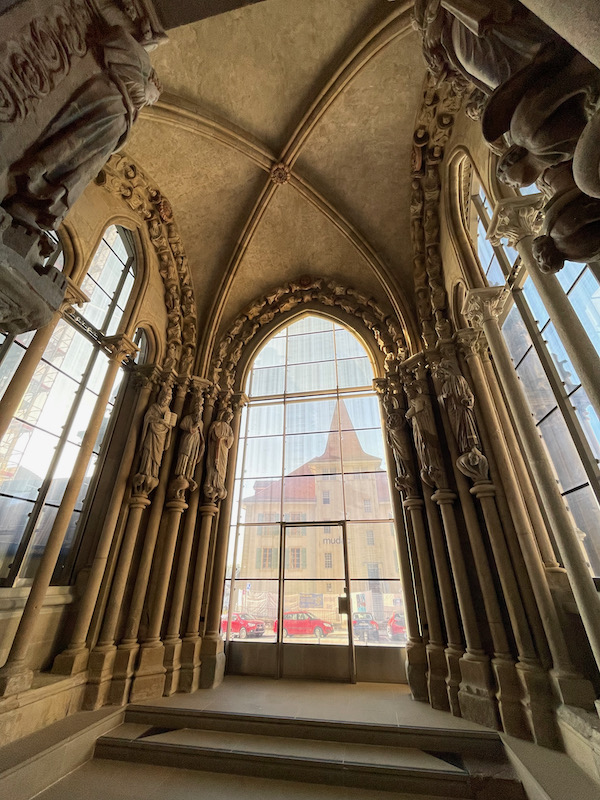
Most of the stained-glass windows are from the 19th and 20th centuries, although the rose window in the transept dates from the 13th century. I'm not sure I'm a big fan of the more recent windows.
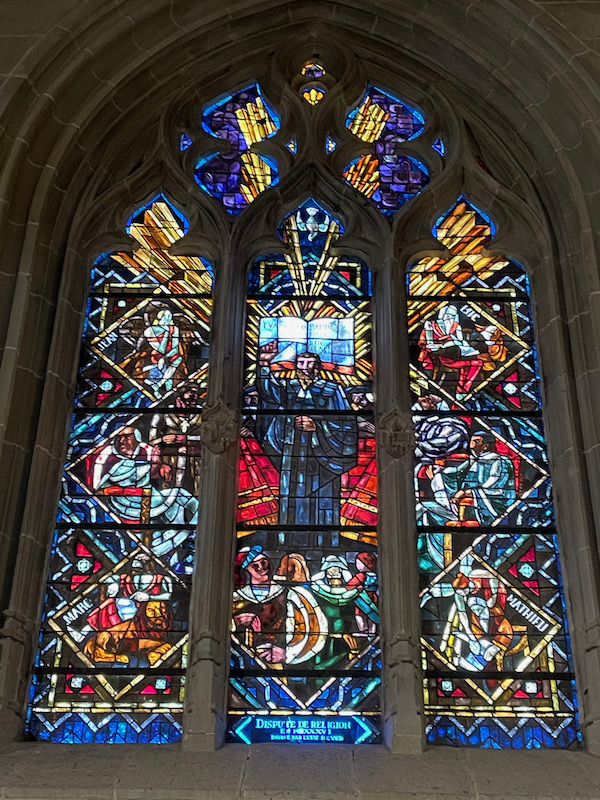
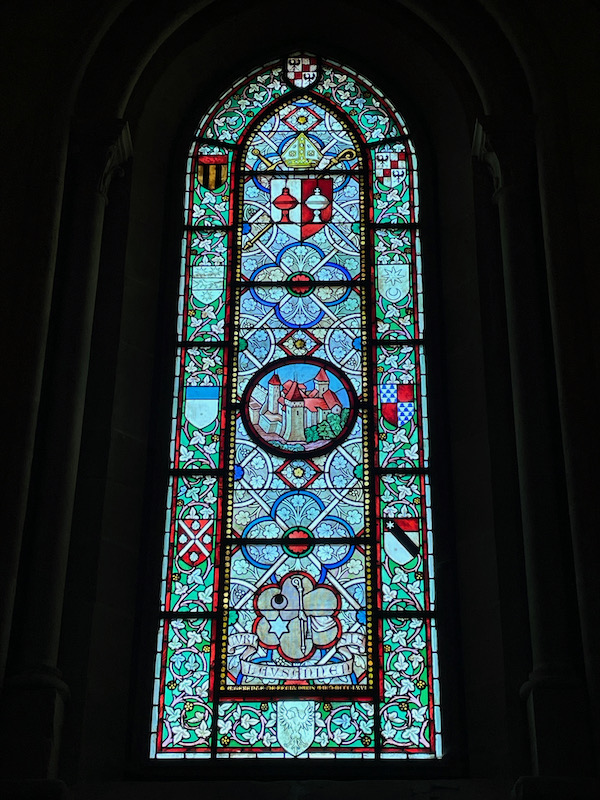
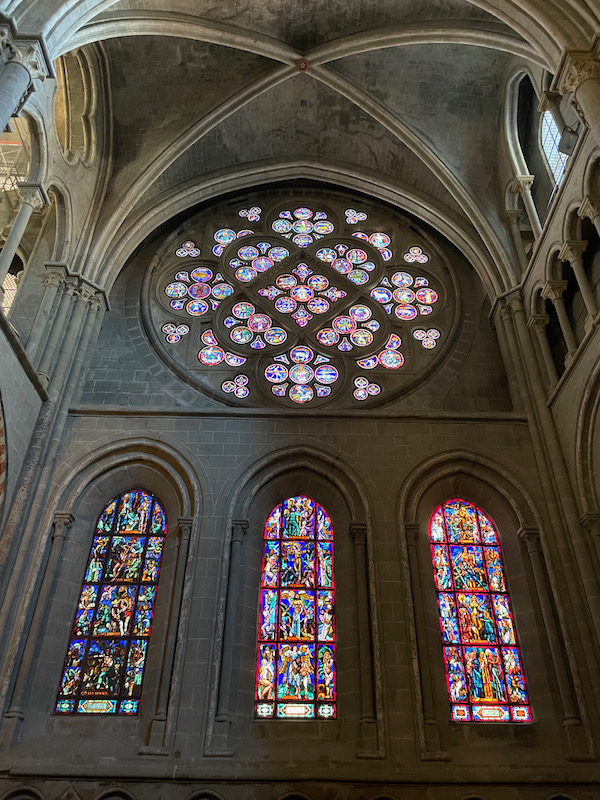
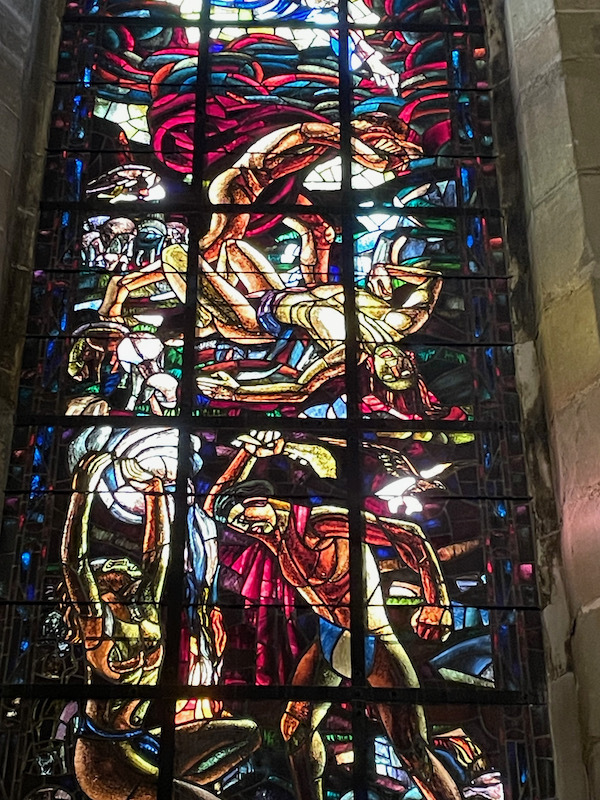
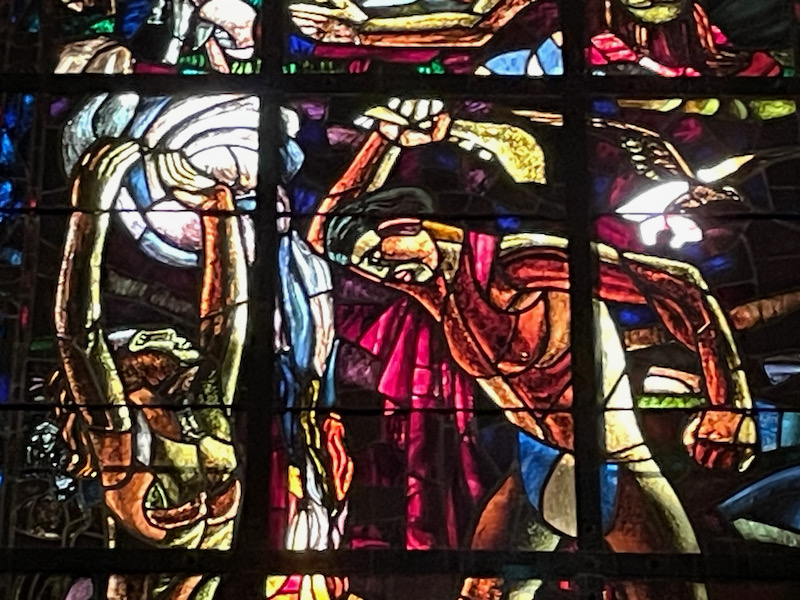
There is still some amount of old painting around the ribs of some of the vaults.
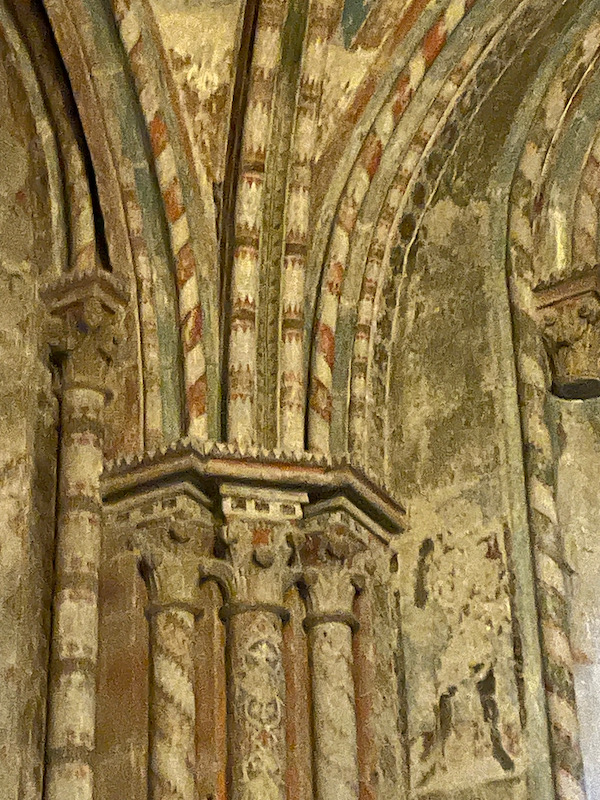
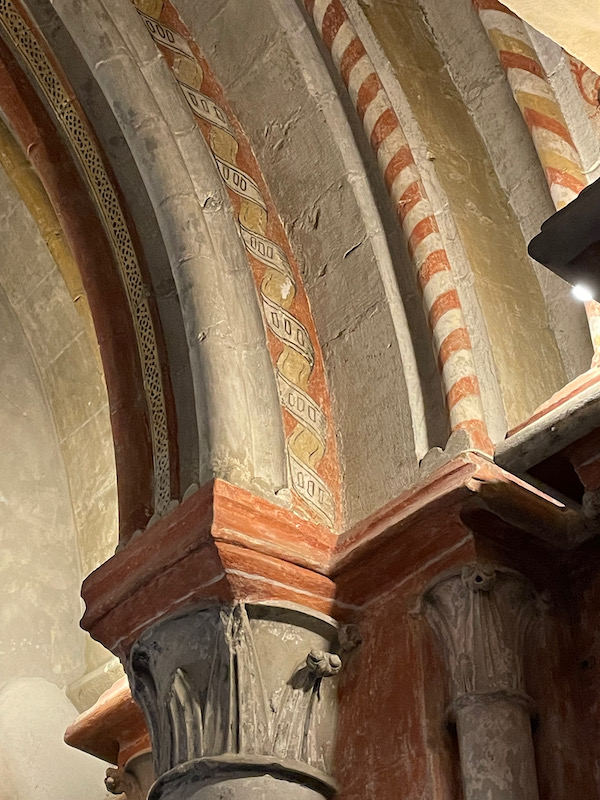
Another few skyline pictures of Lausanne, again with the hazy mountains in the background.
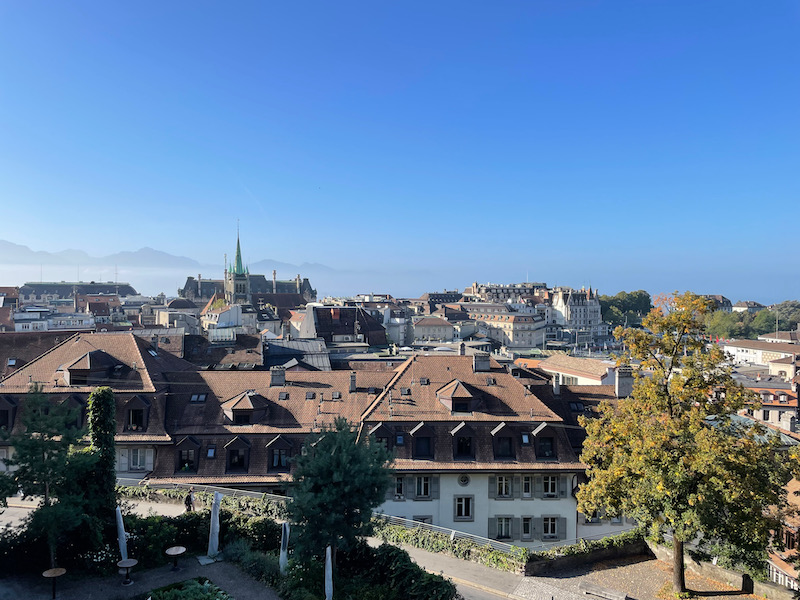
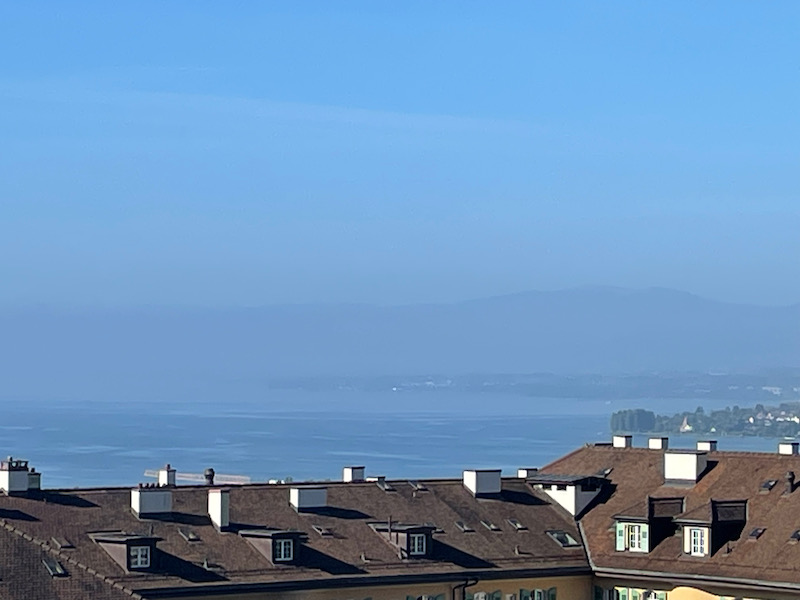
I mentioned that we didn't think of Lausanne as being hilly, but it is. There are quite a few places where you either go up LOTS of stairs or find one of the many little elevators. Here I tried to get an example of one of the little downhill roads.
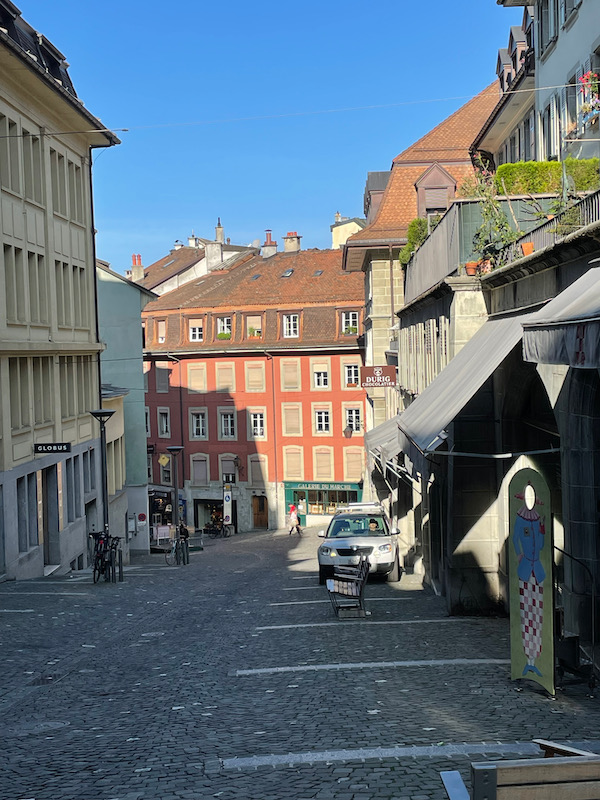
And then a set of stairs going back up ... these stairs are special. They are called the "Escaliers du Marché" or the "staircase of the market". It is a direct (and steep) route that runs between Place de la Palud and the Cathedral. Its existence was first recorded back in the 13th century and its present-day appearance – a winding wooden stairway with a cover and a very steep cobbled street running alongside it – dates back to around 1717.
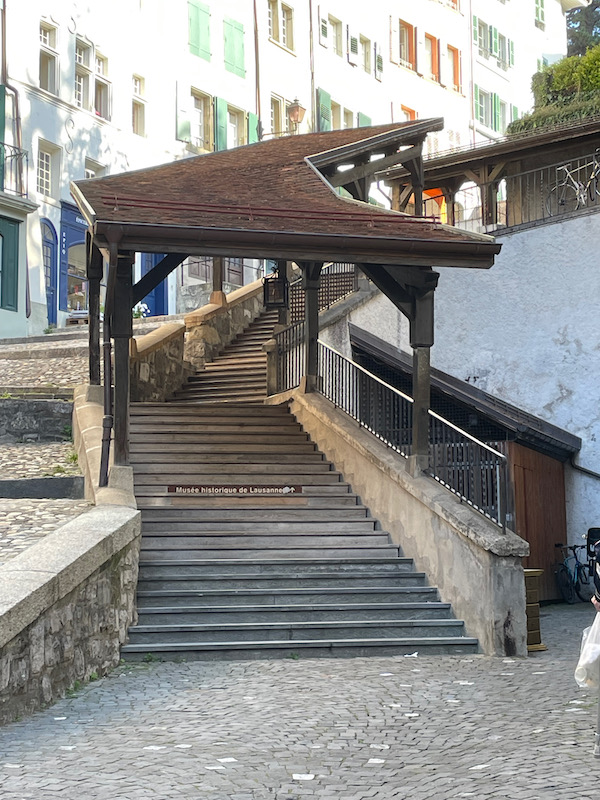
In the center of Place de la Palud is the town’s oldest fountain, dating from 1726. In the center of the fountain is a statue representing justice, holding a sword in one hand and the scales of justice in the other.
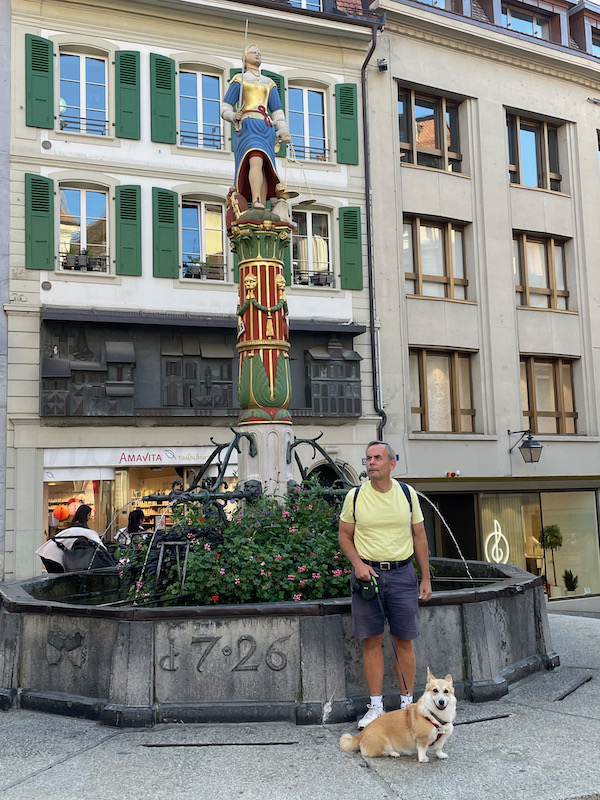
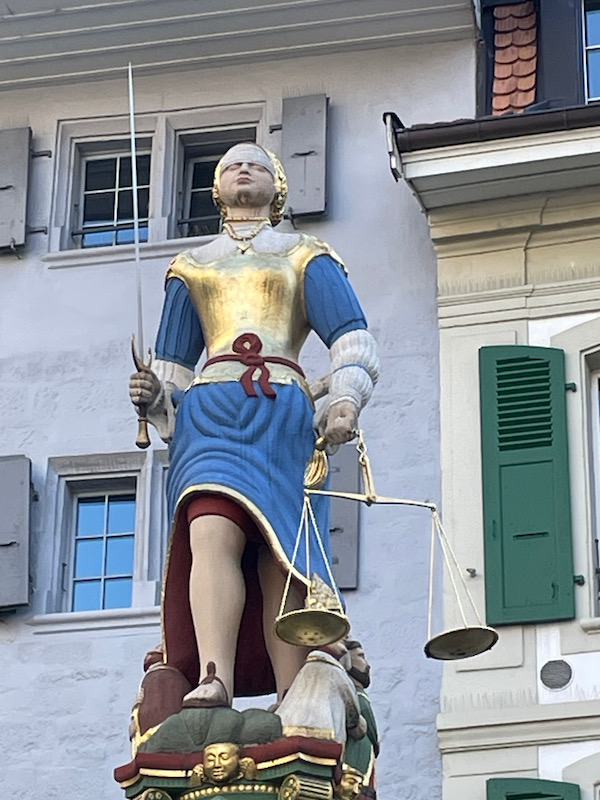
Behind it is a clock that presents the history of the local Vaud area in animated scenes every hour from 9:00 to 19:00. Unfortunately, our timing was not good and so we didn't get to see the scenes.

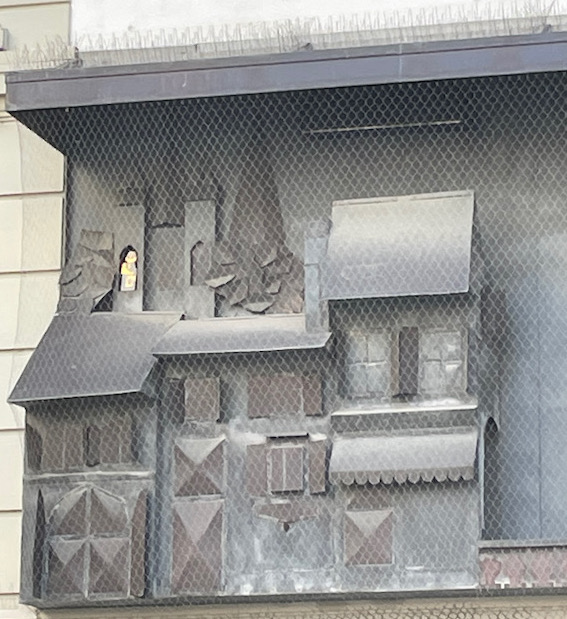
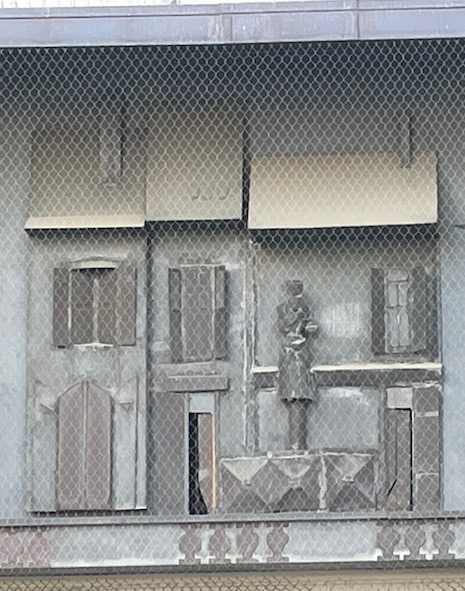
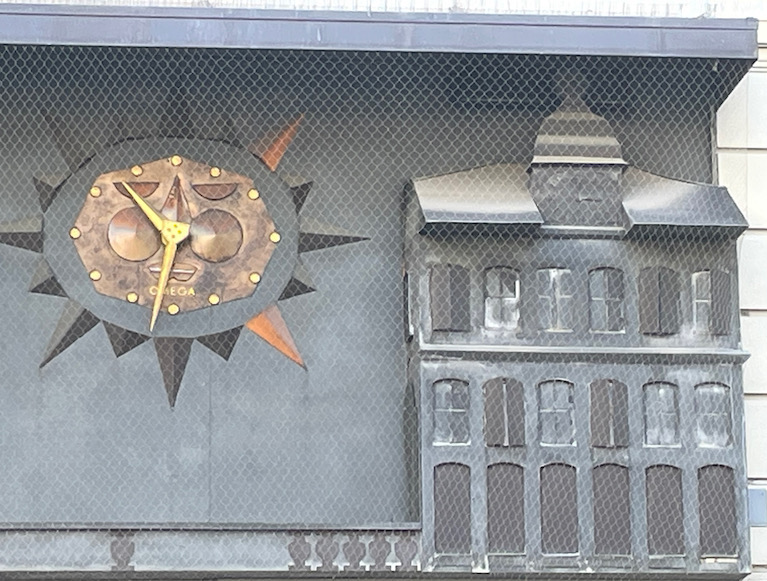
The square also has the 17th-century Town Hall building. It has a Renaissance façade, a roof that is very typical of the Vaud region, and has two copper gargoyles in the form of dragons.
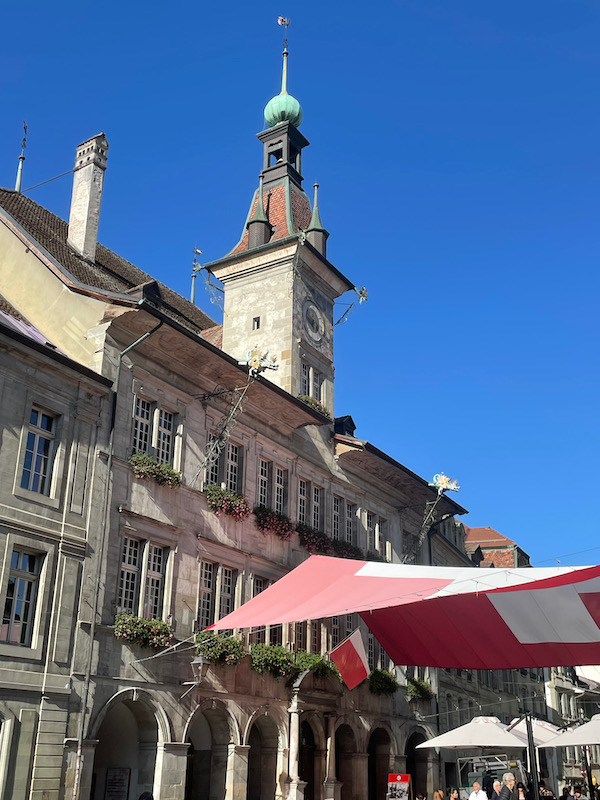
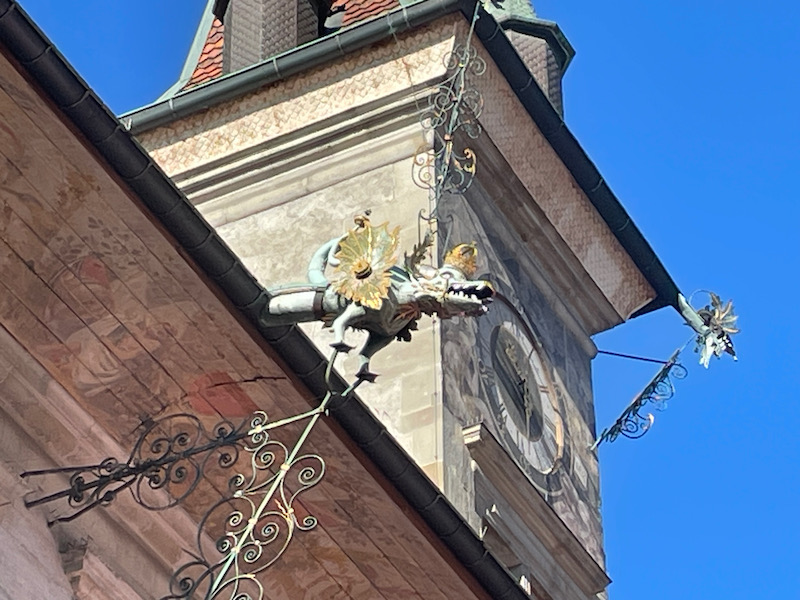
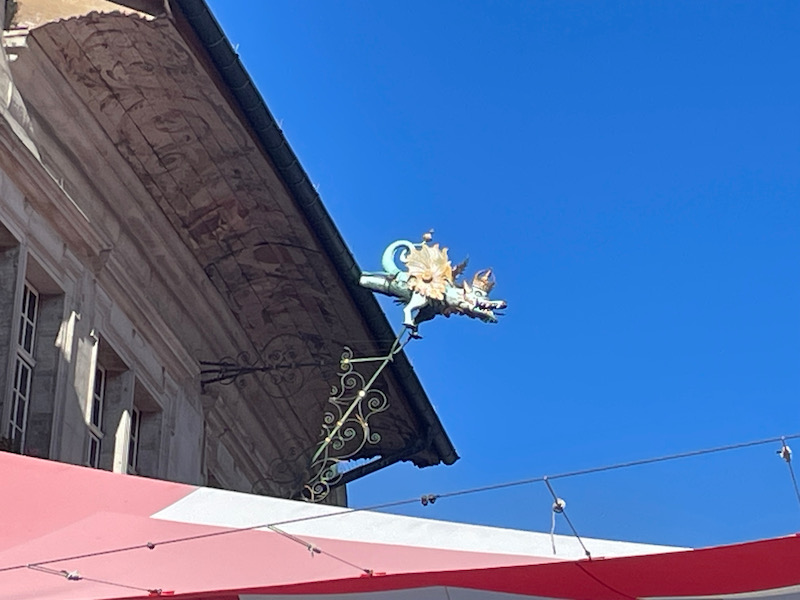
The Palais de Justice was built between 1881 and 1886. The facade is decorated with allegorical sculptures and it sits on a nice little park called Montbenon with several statues, including one of William Tell.
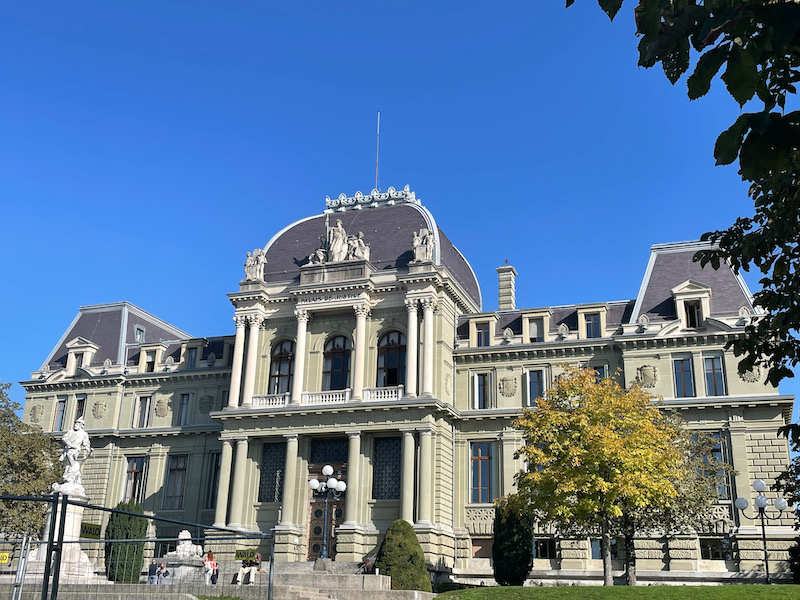
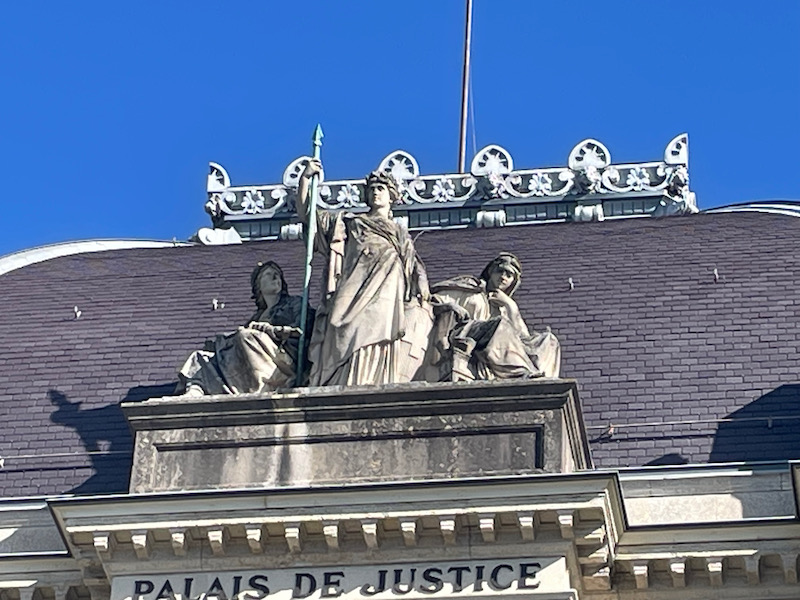
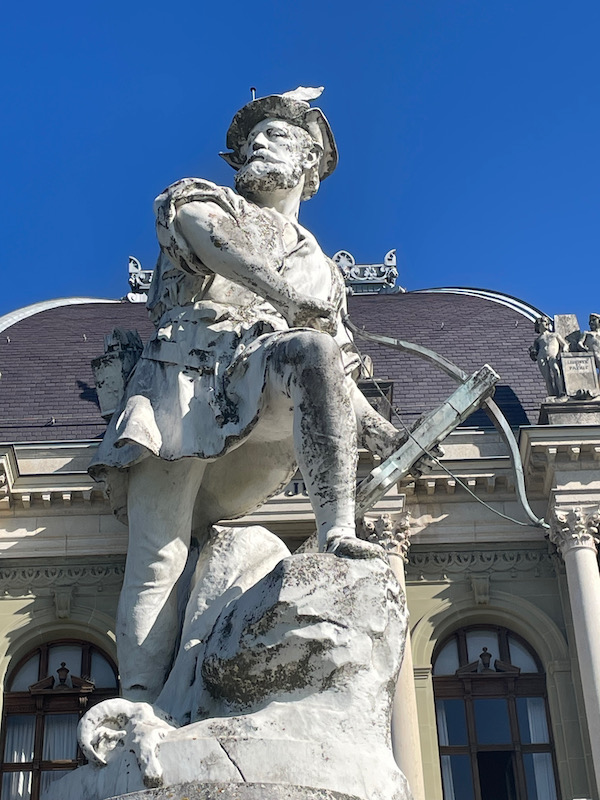
This tower, called the Tour de l'Ale, dates from the 14th century and is the last remnant of the city walls of old Lausanne, which were largely destroyed in the 18th century. Here is part of a picture that shows the walled city (to the right) and this tower over to the left.
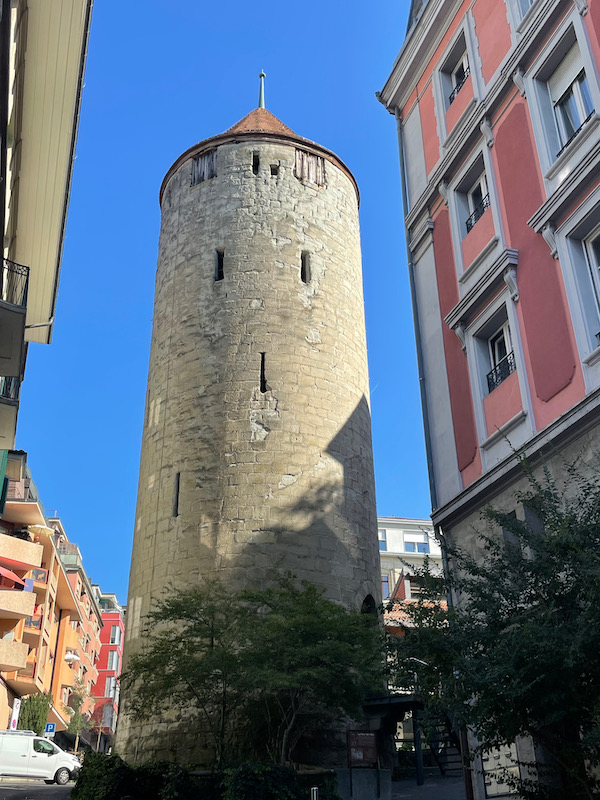
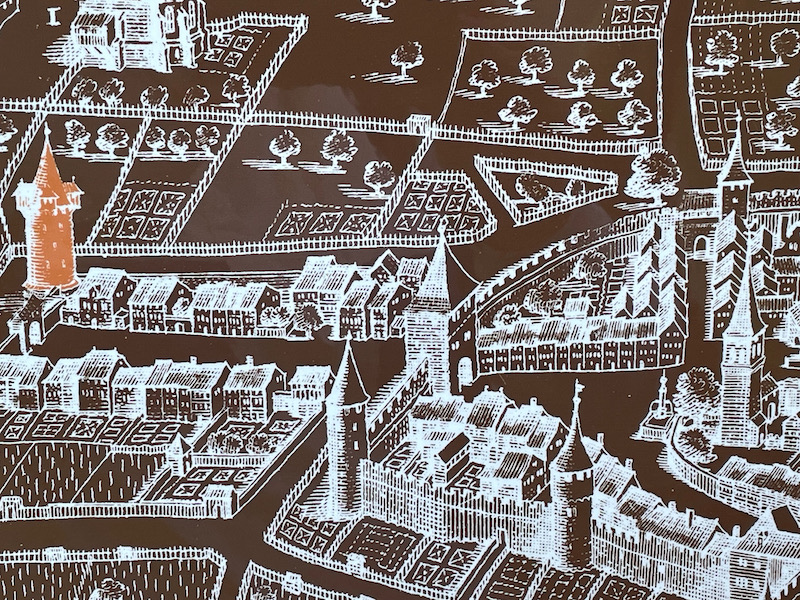
We then headed down to Lake Geneva and the "Olympic" section of town, although there has never been an Olympics held here. There was a clock that counts down until the opening ceremonies of the next Olympic Games. There are a bunch of really nice buildings in this area, which must have been where the wealthy people from Lausanne went to get out of the city.

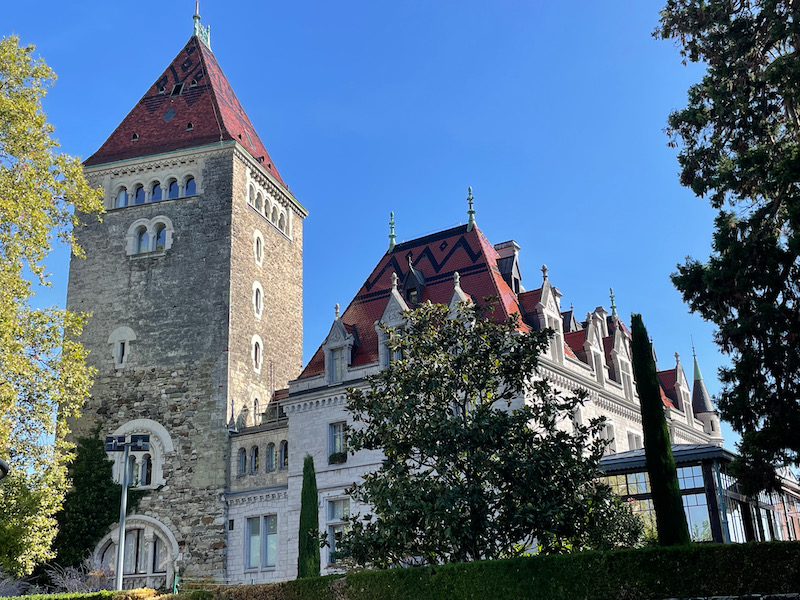
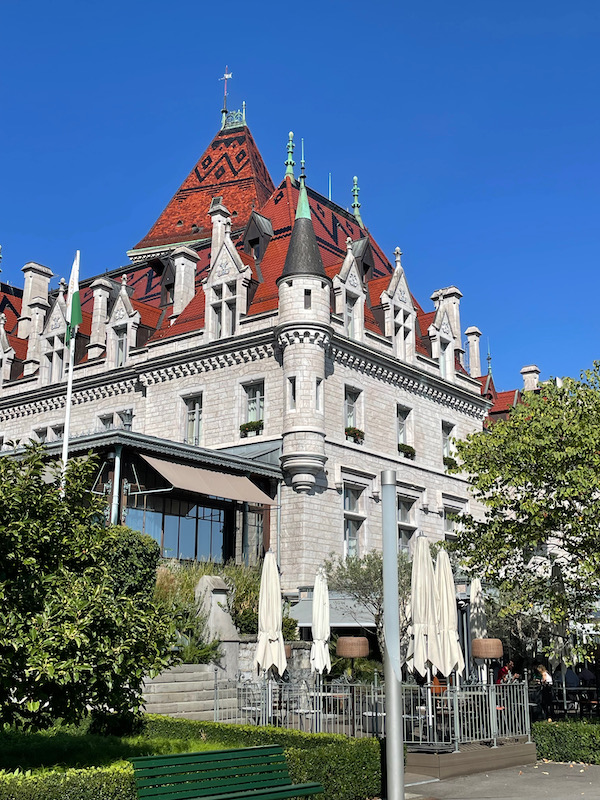
We really didn't get much of a view of the Alps on the other side of Lake Geneva (also called Lac Léman) because of the fog/haze/low clouds.
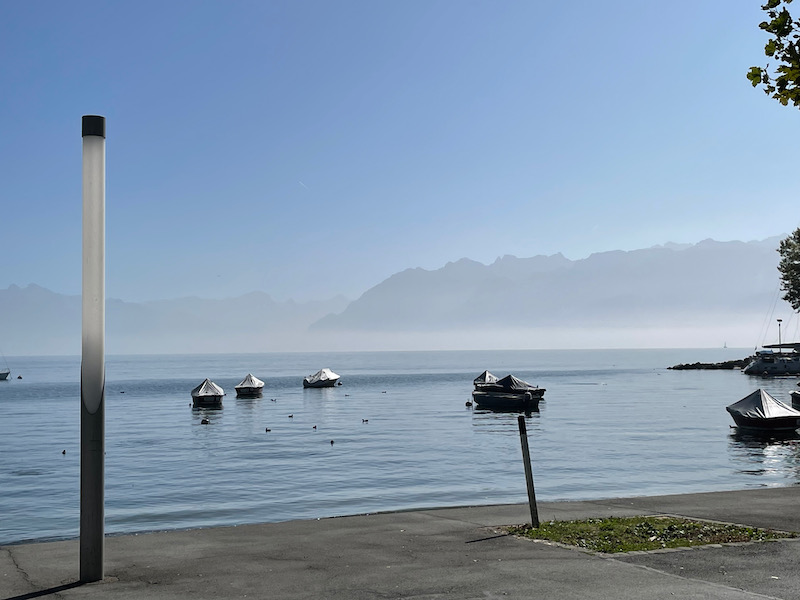
We then headed to the Olympic Museum, which was closed, but we took a walk through the park to see the various sculptures representing various sports and Olympic personalities.
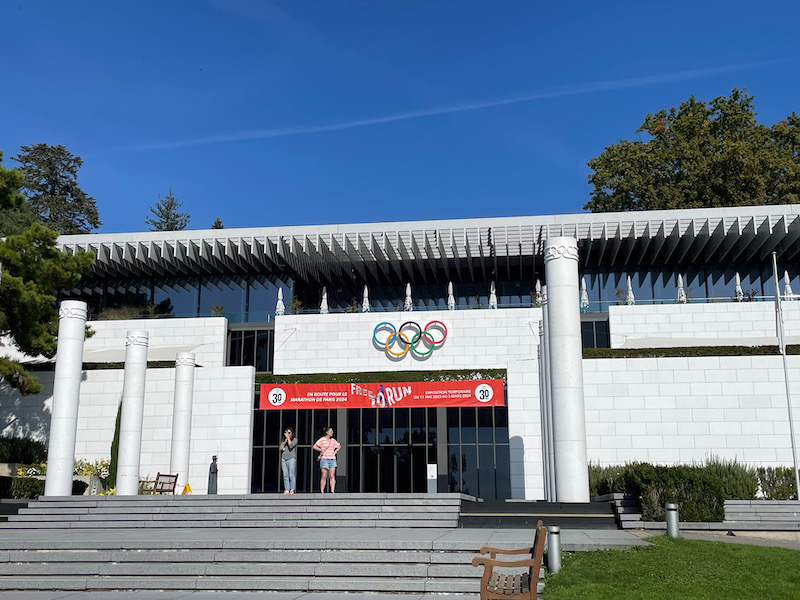
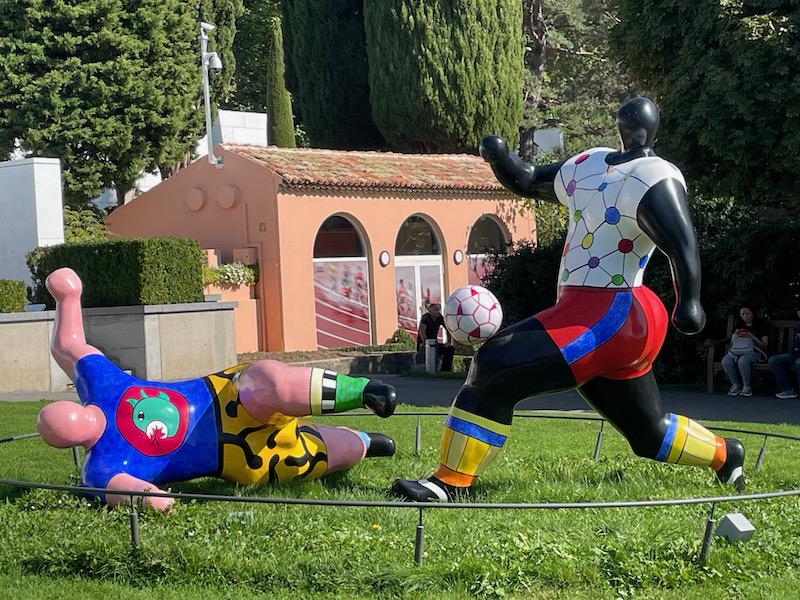
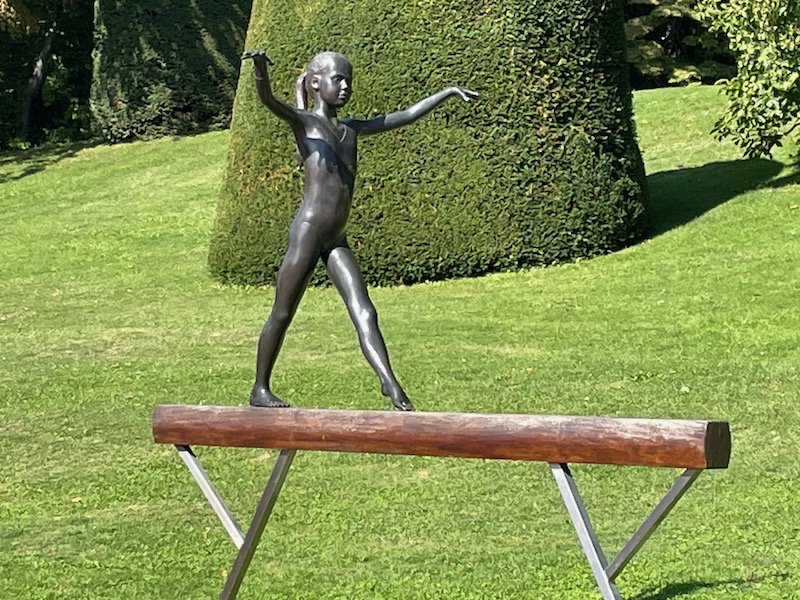
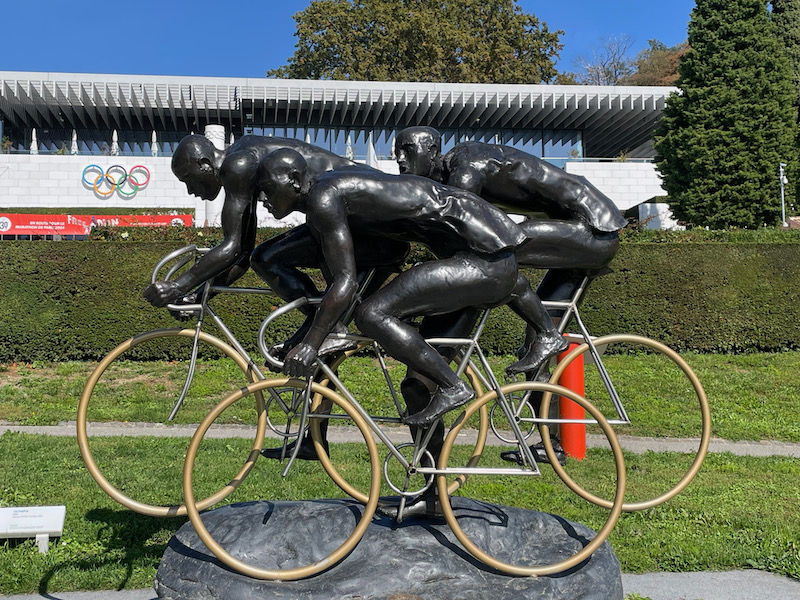
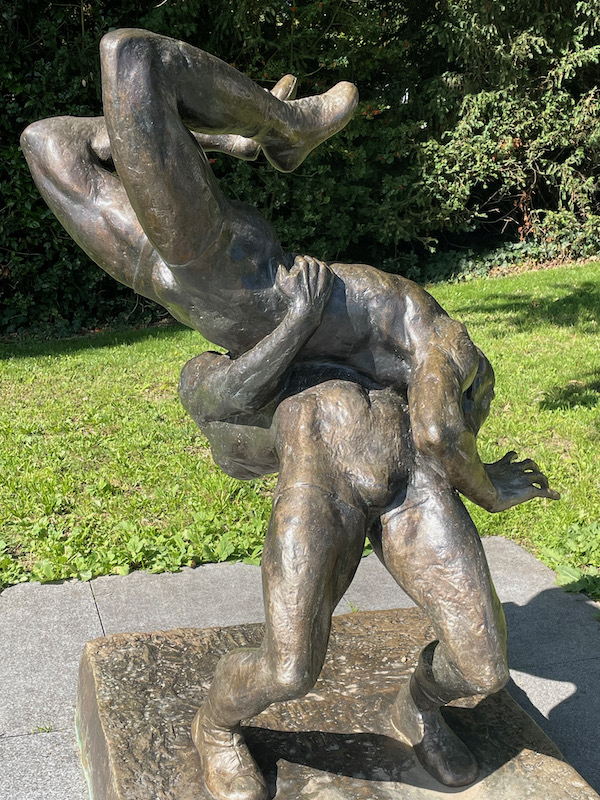
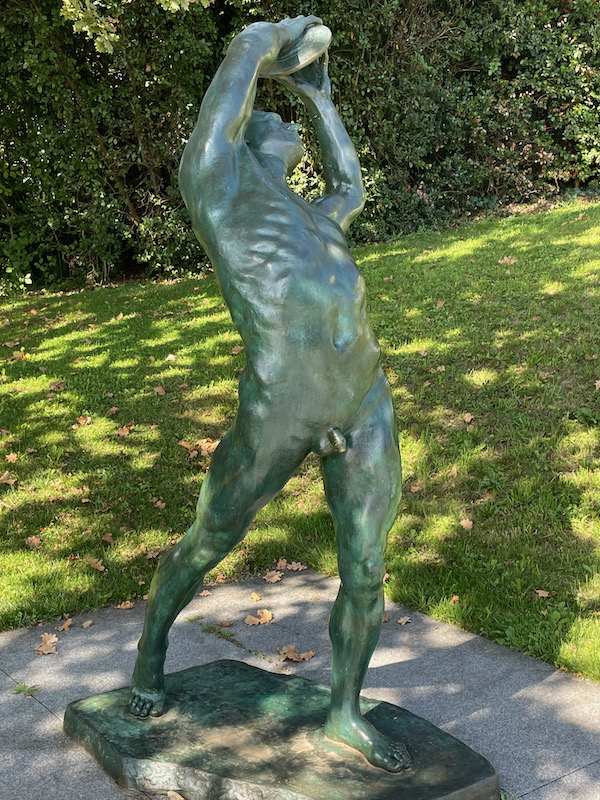
There is a 100-meter track setup that allows you to test yourself against the record set by Usain Bolt at the 2009 World Championships in Berlin ... my time was a bit slower than his 9.58 seconds. Supposedly, this short track is made of the exact same substance as that one was.
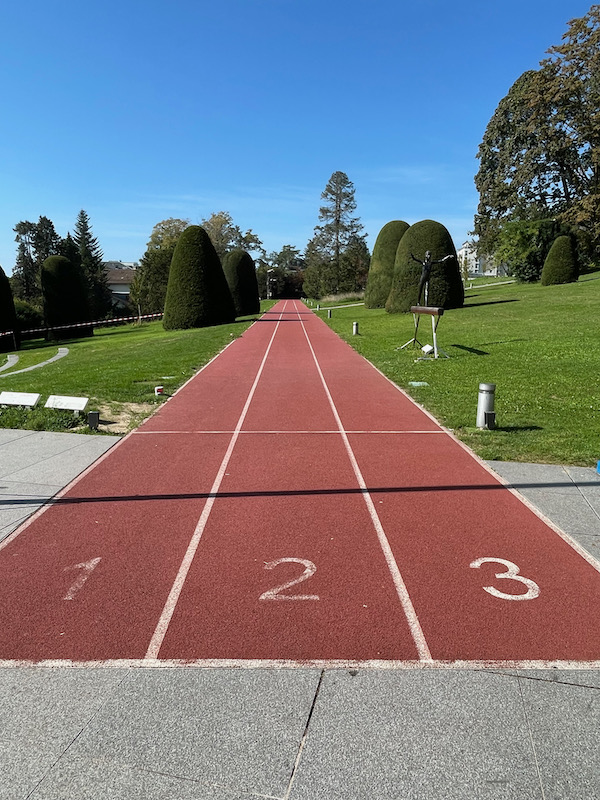
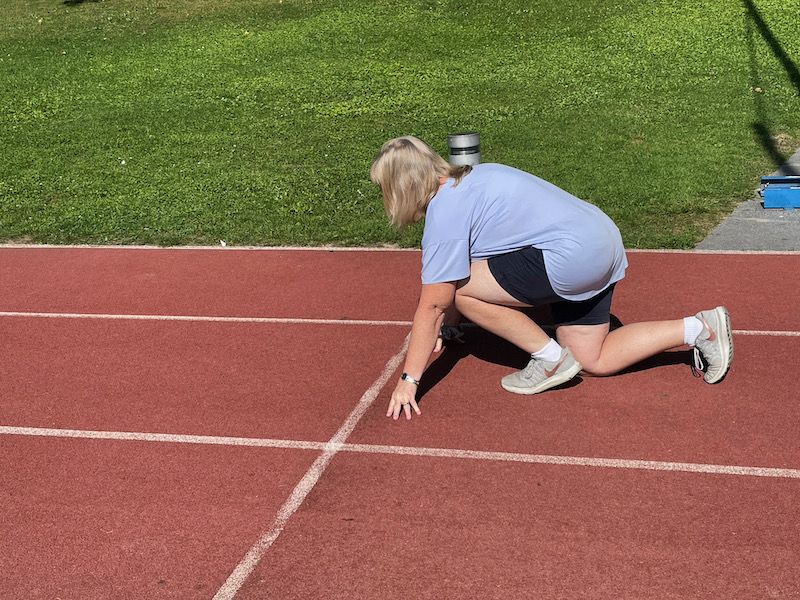
Some of the statues were of athletes, like this one of Emil Zátopek. He has known as the "Czech Locomotive" and made history by winning the 5K, the 10K, and the marathon in the 1952 Olympic Games in Helsinki.
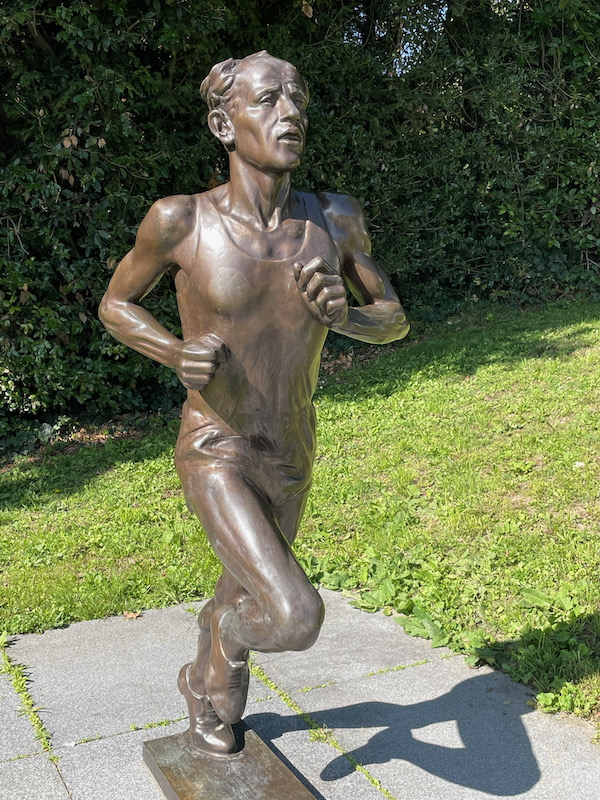
The Thai pavilion was a gift to the City of Lausanne from the King of Thailand in 2005 to mark the 60th anniversary of the accession to the throne of H.M. King Bhumibol Adulyadej. When H.M. King Bhumibol Adulyadej (known as Rama VIII) was elected to the throne by the National Assembly, he was 9 years old and studying in Switzerland. He returned to Thailand in 1945 after completing his law degree, but his stay would be somewhat short. About 6 months later, he died in his bedroom at the palace. The initial announcement was that he had accidentally shot himself while playing with a pistol but a court ruled that he had been assassinated and 3 people were executed (although King Rama IX later said that he didn't believe they were guilty). It is still a mystery today.

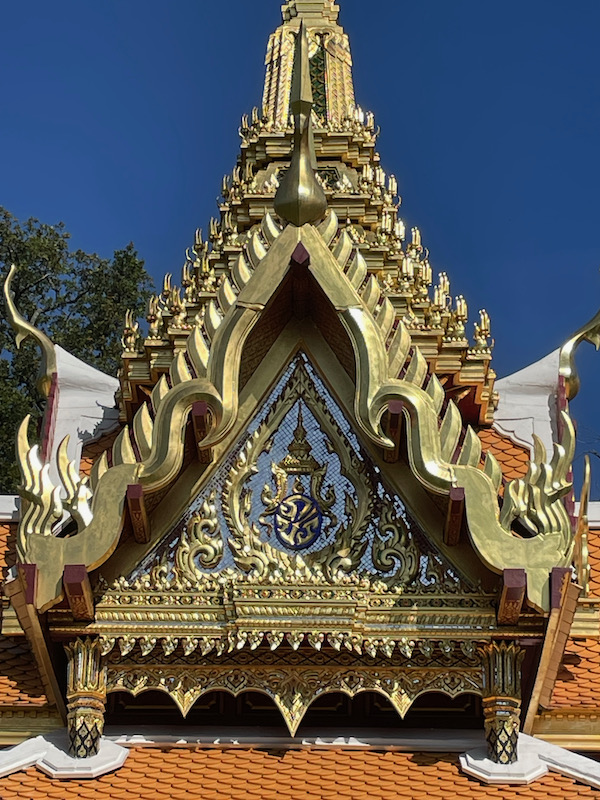
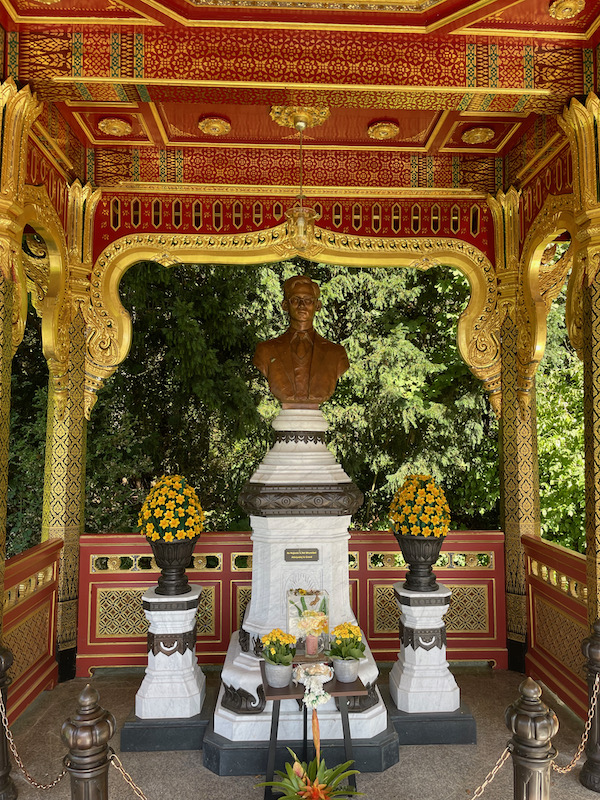
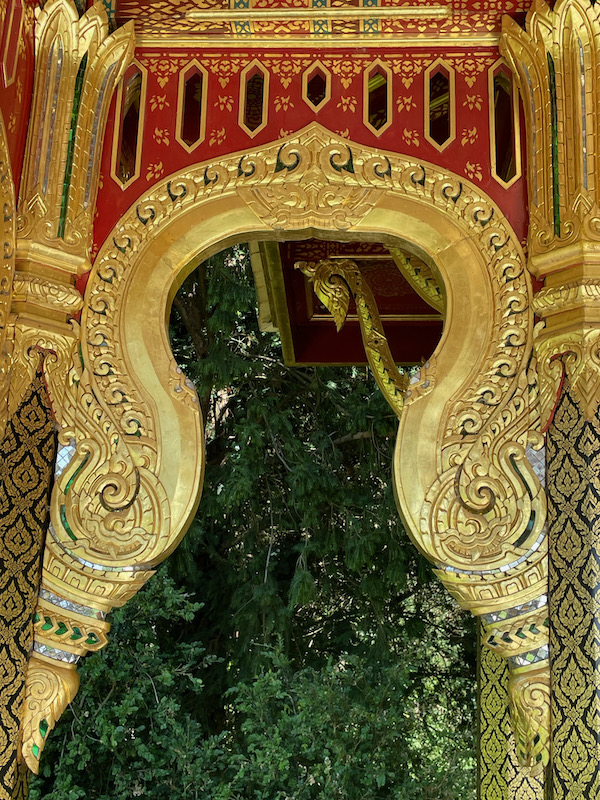
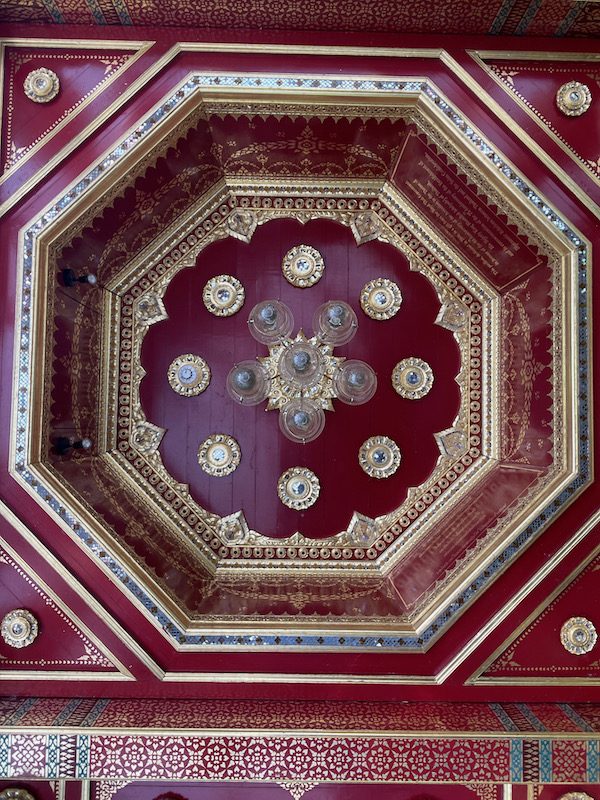
At the end of the Olympic area is the Haldimand Tower. While it looks like a medieval tower, this was actually built around 1825 as a result of a whimsical competition to see who of a group of 3 could build the most beautiful ruined medieval tower.
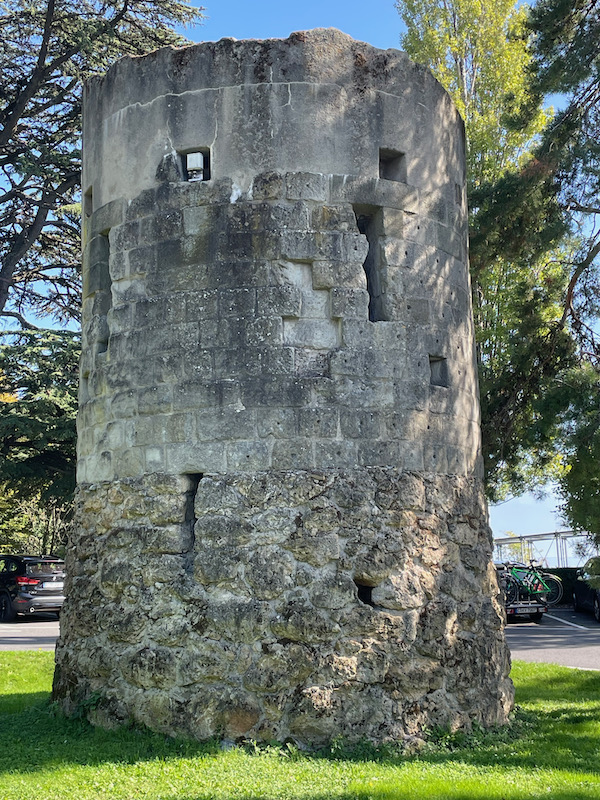
To finish the blog for Lausanne, a couple views of the sun setting over the hills and lake.
